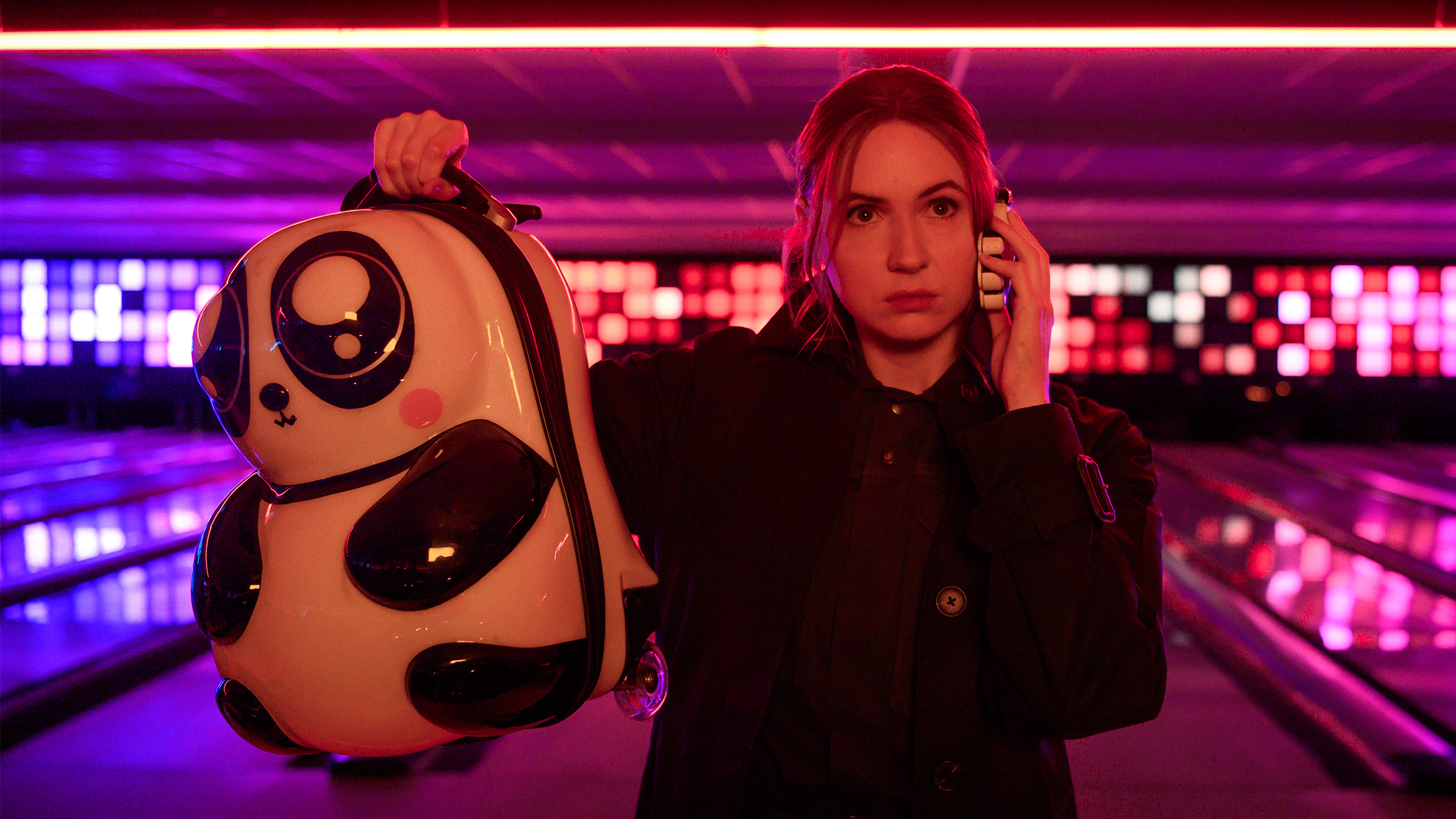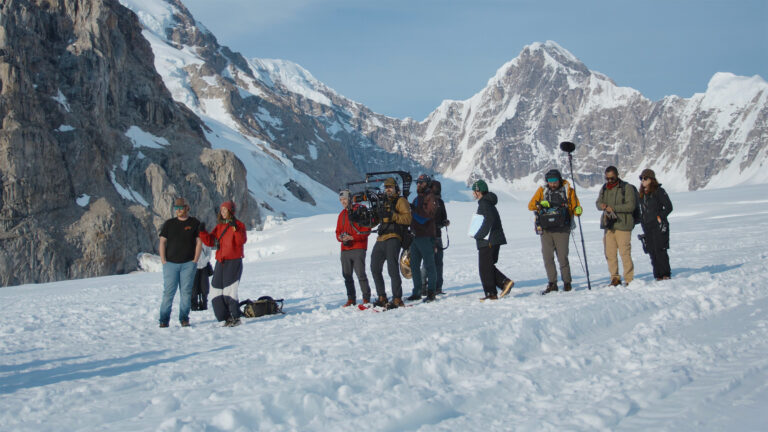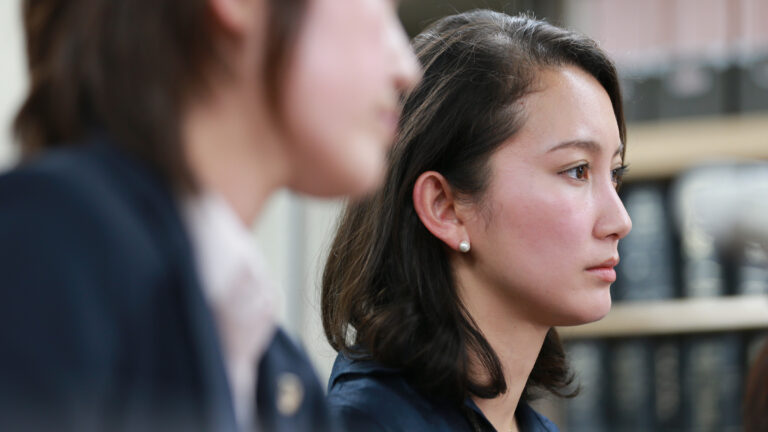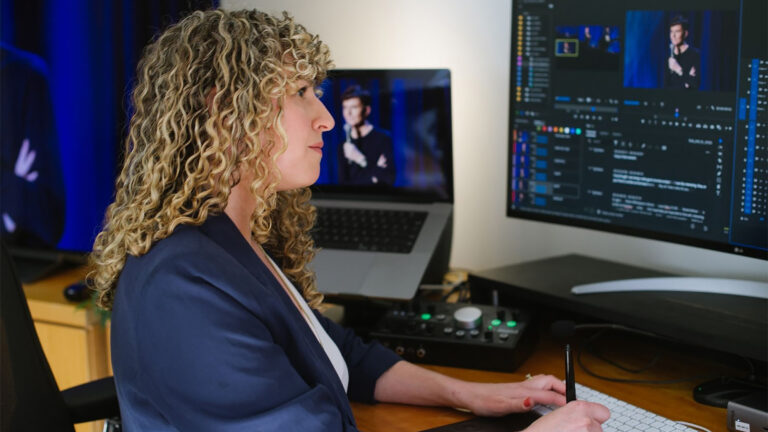Mix a cherry-picked female action star cast and hectic neon-lit fight choreography, add a child-in-peril, sprinkle with Russian mobsters and you have the recipe for Gunpowder Milkshake, currently streaming on Netflix (US).
So in today’s Art of the Cut, we’re talking with editor Nicolas De Toth, who’s built a career cutting action films, including The Commuter, Live Free or Die Hard, X-Men: Origins, and Underworld Evolution.
Listen while you read…
HULLFISH: It’s so nice to talk to you. My wife and I thoroughly enjoyed the film the other day.
DE TOTH: Good. You were able to see it?
HULLFISH: Yeah, we watched it last night. It’s a wild ride. It’s really fun.
DE TOTH: It is. It’s a genre-bender, a mixture of everything. The delicious old-fashioned B-movies, contemporary twists, and strong women.
HULLFISH: It’s got that noir feel to it.
DE TOTH: It definitely has that noir feel to it. It’s a fun ride.
HULLFISH: The rhythm of the movie is really very stylized, as you said. It’s dependent on different genres. Does that make it easier to cut or harder to cut that things are very stylized?
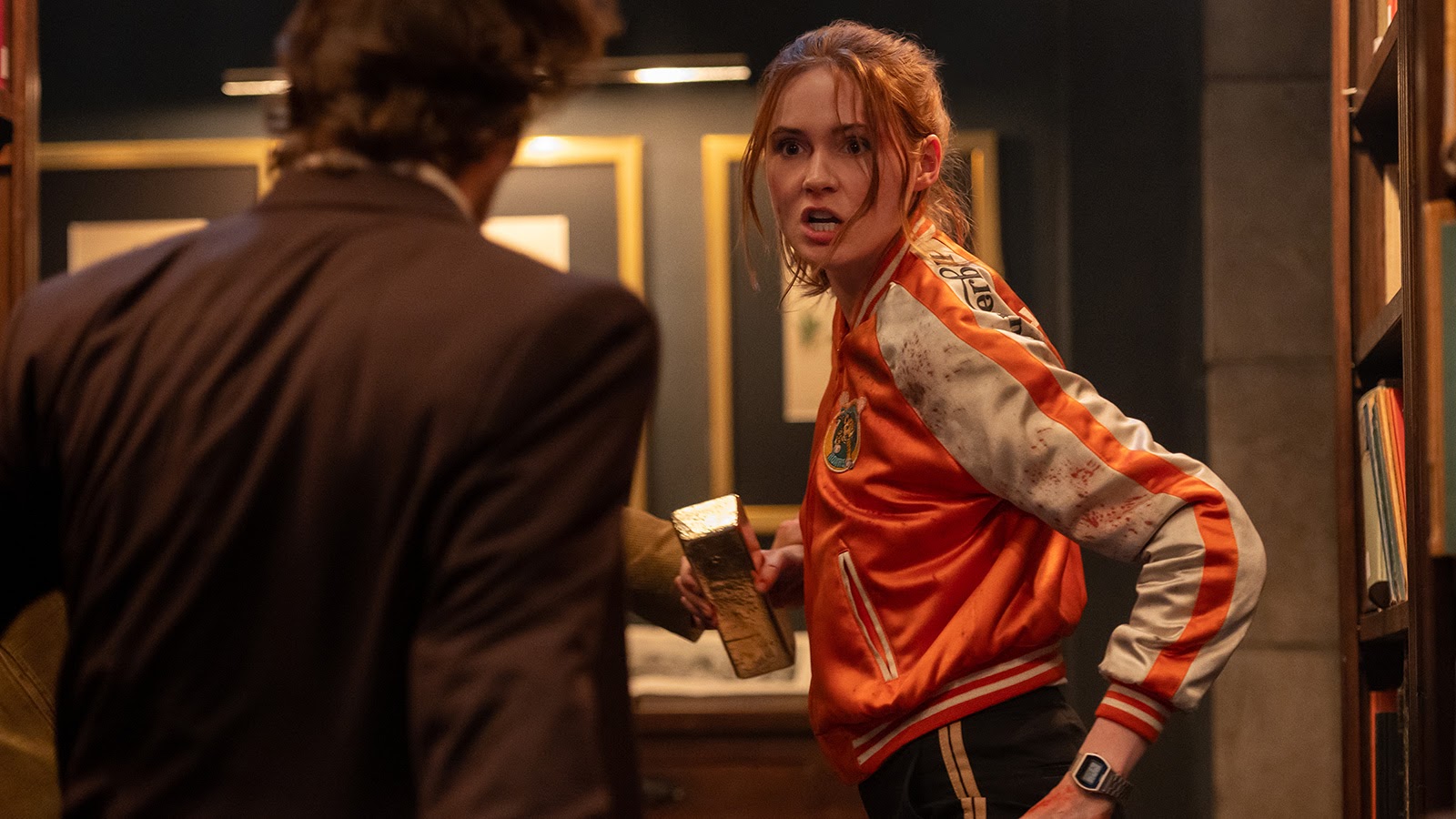
DE TOTH: I think the style of editing for any feature, as you probably know, is really driven by the story and ultimately the script. If the script lends itself to it, then it’s effortless. The only time it becomes an issue is when you try to impose a style on a story that is not built for it. I think that’s usually a recipe for disaster. To be honest, I can’t think of any situations in which someone has imposed an editing style or a pace on a movie or a story that just wasn’t meant for that. I can’t think of that too often.
HULLFISH: I just talked to Jennifer Lily who cut all the seasons of Master of None. The third season is so radically different from the other two seasons, and one of the things I said was, “It’s clear that you aren’t imposing a style because the style is so radically different in this season.” She said, “You have to let the film and the director speak to you through the footage.” That’s clear that she wasn’t trying to impose something, it was being imposed on her almost.
DE TOTH: Yes, very much so. I think in this situation we establish a world basically from frame one. In this situation, Navot [Papushado] had a very clear vision of how he wanted this film to go and a very clear idea that this was going to be a stylized journey from the get-go. I believe that he wanted the first frames to tell you immediately, “Okay, this is where you are. This is the world.” Almost like a visual iteration of the Star Wars credit roll which says “A long time ago…” Before you even start the action, we’re telling you exactly what you’re in for. In that respect, I think it helped a lot because then if the audience hooks in, you’re in for a wild ride. Just sit back and enjoy. Buckle up.
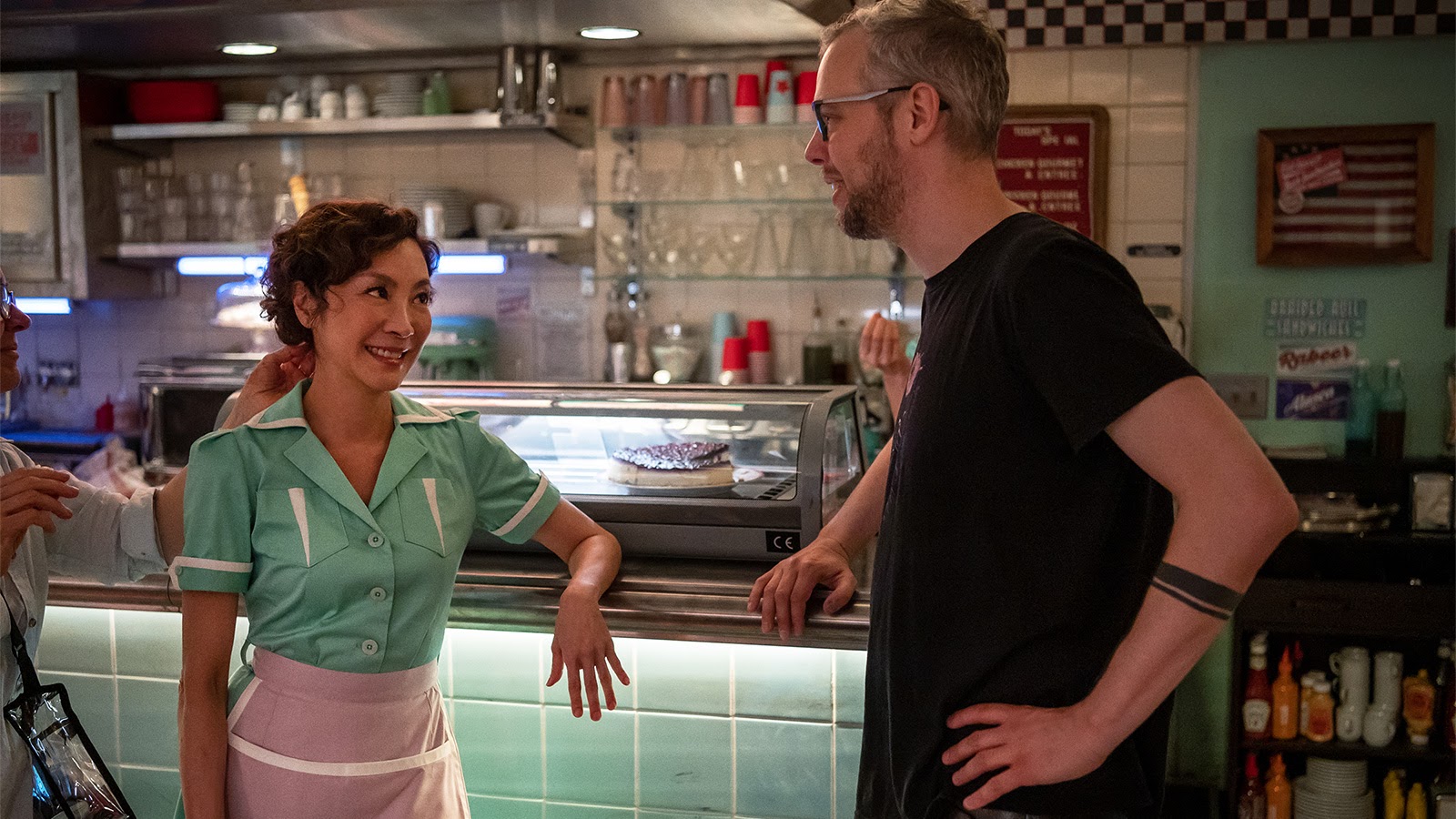
HULLFISH: Buckle up. There’s an early flashback in the movie that takes place in a diner. I’m assuming that was scripted that way?
DE TOTH: It’s interesting. We went through iterations of this. The original version actually had the diner as the opening sequence. It opened on a diner with a girl sitting in a booth waiting for someone who’s late, and that person who’s late is the mother. Then, the mother comes in and they have a conversation: “You’re doing this again.” This is a habitual thing. The mother’s always late, always something going on.
At first, you think that it speaks to what everyday life is with a lot of parents who are busy at work. Except in this case, the mother is busy at work killing people. She’s an assassin. The thing is that the daughter knows it. So, it’s not even her saying, “Honey, I’m at the office. I’m an accountant.” Instead, she says, “I’m busy killing people, so you can’t come.”
So, that’s how it was originally going to start, but then we found that the pacing of it threw you off in a way where it took you out. You weren’t sure exactly where you were, you didn’t know who was who, and so they found that it was better to start the movie a different way.
HULLFISH: That was something you obviously discovered in post?
DE TOTH: Yes. Post and previews.
HULLFISH: The opening scene and certainly other places in the movie have some slow-mo. When the mother sits down in the diner, is she in slow-mo?
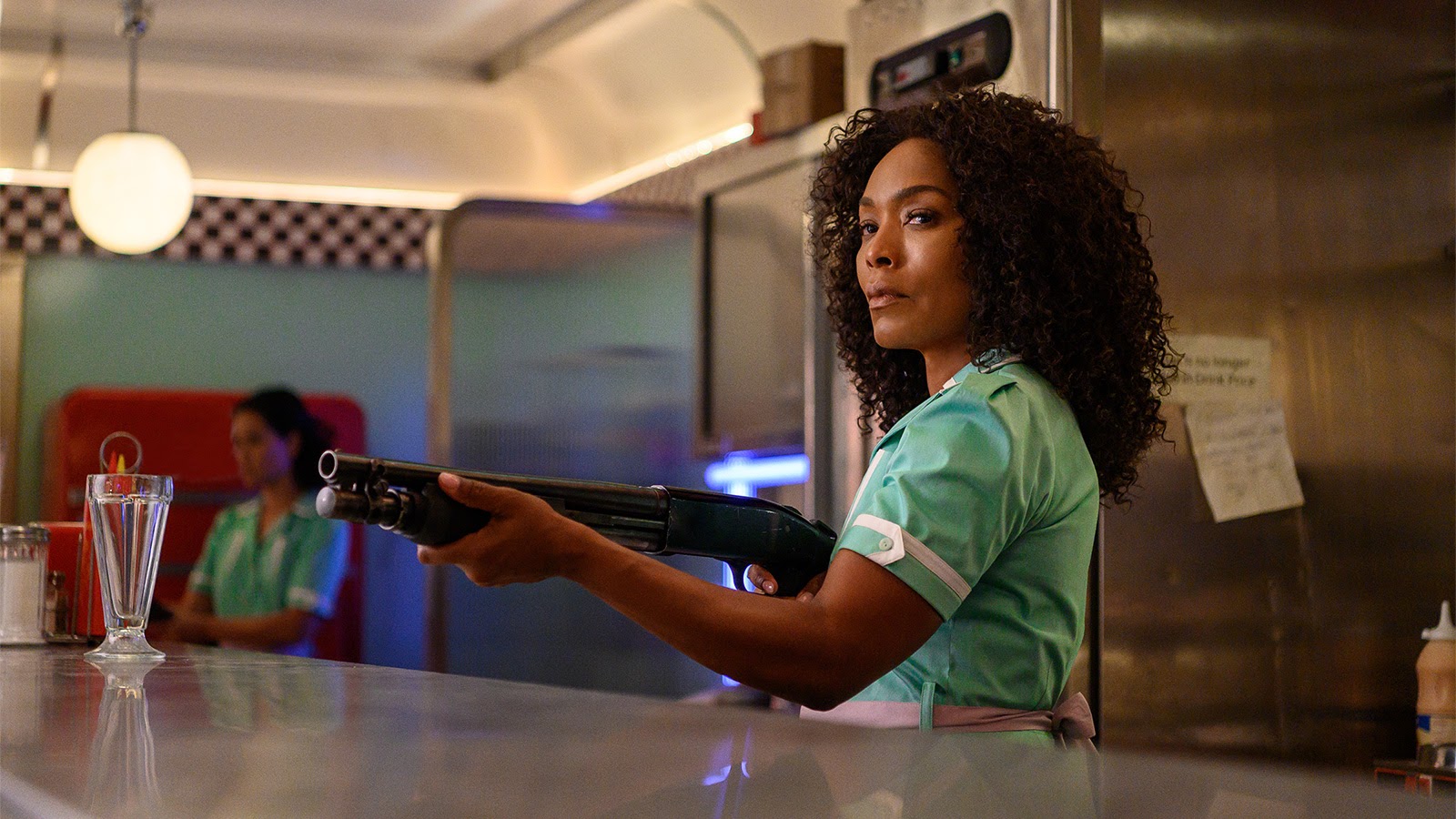
DE TOTH: Yes, originally she walks across the whole diner in slow-mo, and Navot felt very strongly that for him this was a very Western moment. The slo-mo was meant to represent the daughters and the larger-than-life image that the daughter had of her mother. This is someone of importance and you must pay attention to this moment. He felt it was a very cinematic and very western-like moment.
HULLFISH: Is there a key to getting into and out of slow-mo?
DE TOTH: There are a lot of debates on slow-mo. Some people might argue that it’s gratuitous, and some people love it. Again, I think the story will dictate when you need it or sometimes the director will. I think it’s very subjective, and I don’t believe that there’s an always-or-never.
There’s a style of editing. For instance, there’s a Zack Snyder style in 300 where slow-mo was used very well. It was a newer style, a revisiting of an action slow-motion style which allows you to slow down to see the beauty and the artistry of the martial arts being performed in the fights. So, in that respect, he did it very well. But sometimes it’s done in order to highlight the best moment of the action ultimately, because then if you went 10 frames longer you can see where they’re pulling the punch. You go 20 frames longer, and you see they’re missing completely.
I think it’s a bit like panning for gold when it comes to that. Cinematically, I think it’s very subjective. It’s usually a heightened, dramatic moment meant to draw attention to something of importance. Getting in and out of it has to be accompanied with some gravitas. In my opinion, it has to be accompanied with some musical assistance or a very crucial storytelling moment.
HULLFISH: I was just trying to think of when the mother walks across the diner and sits down, and then obviously the conversation can’t take place in slow-mo, so you’ve got to find that right frame to get from the mother sitting to the rest of the conversation.
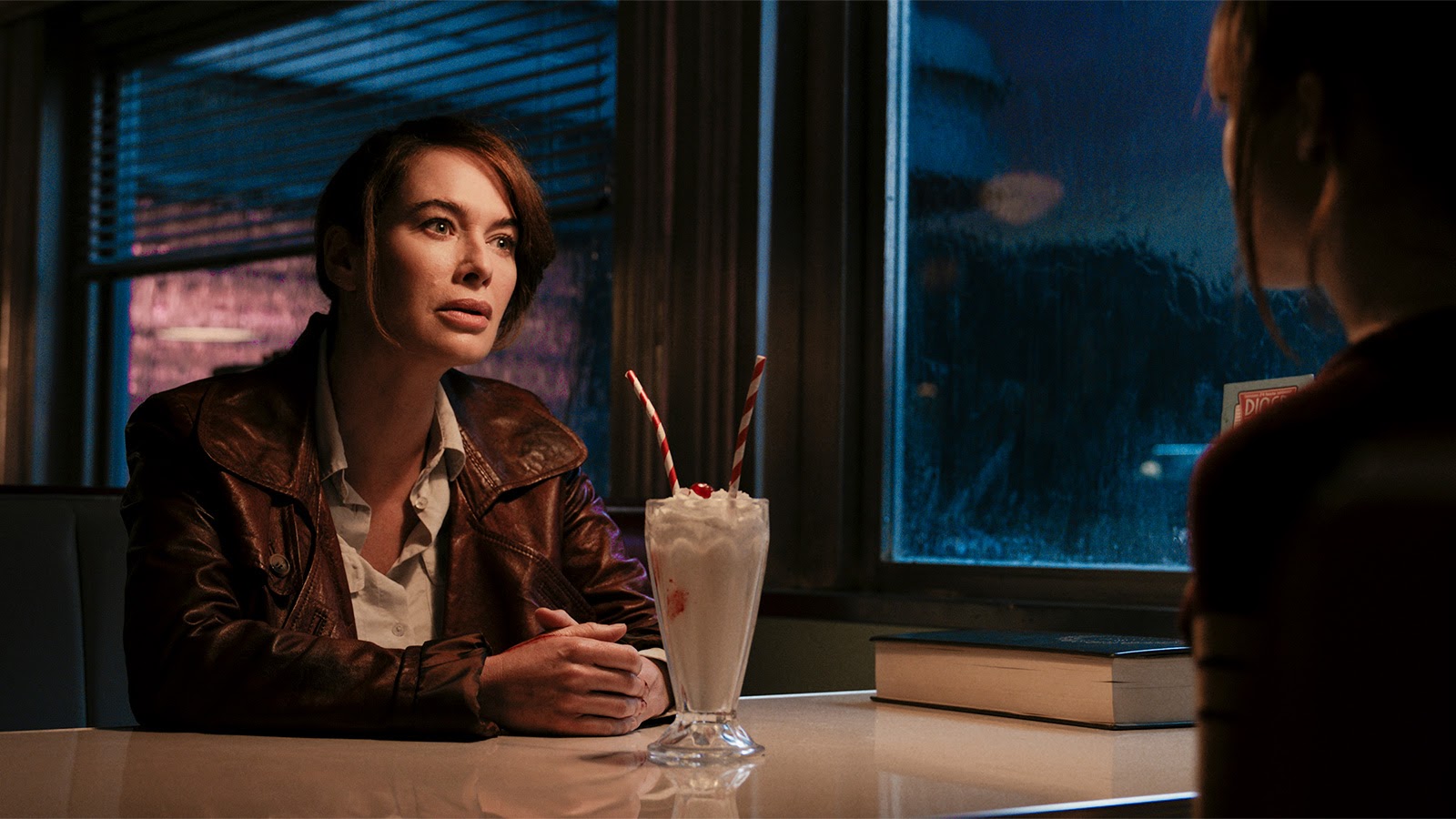
DE TOTH: Yeah, but even in that, it all comes down to how it was performed and what coverage you get when you do it because sometimes it’s more elegant to let her sit down in the wide, as opposed to cutting to her. It really depends. It has a lot to do with planning, and sometimes you don’t have time to plan it. You think about one angle, but you don’t think about the other and the impact that one will have on the other. It may have a domino effect. So, if you’re cutting from a profile shot of her walking across the frame and you cut to the three quarter over the daughter’s shoulder sitting and the woman’s sitting down into frame, there’s a version in which she starts in slow motion and you ramp it to normal speed so she lands. But then depending on how she lands, that might be humorous. It might look goofy. So, you really have to play with the footage.
I hate to be ambiguous in my answer, but I don’t think there is a rule that says: “always cut from the side to the left to the over,” because it really depends on the performance and the look. As you know, slow motion draws attention to so much like facial expressions or body movement. Sometimes when you go from slow to fast, it looks strange.
It’s been a while now since that scene. I haven’t seen it in over a year, so there’s some cobwebs there. I’m on my third project since. I’m pulling them out of the attic here.
HULLFISH: Like all the editors I talked to, they say, “Once you start on a new project, you flush all that stuff out of your brain. That’s information I don’t need anymore. I’ve got to forget about that.”
DE TOTH: You do. I mean, it went from Gunpowder Milkshake to a fantastic little Irish indie movie with Aidan Gillen shot by this Irish filmmaker in Dublin. A true film noir detective movie about. Then, a film by a Polish up-and-coming director who is going to Cannes with a crazy, completely out-of-left-field movie. Those are completely different experiences. So, now I’m trying to remember Gunpowder. It seems like a lifetime ago. Now I’m on a Lucasfilm project, so it’s a whole different thing.
HULLFISH: That’s a couple of European projects, and Gunpowder Milkshake was a European project, although it had a bunch of American actors. Do you find that a lot of your work is from Europe and how do you land these projects?
DE TOTH: Well, I started in LA. I did a lot of work at 20th Century Fox. I did Live Free or Die Hard, Wolverine, and a whole bunch of stuff there. Then, I was hired on a project to oversee it and it just took us to Europe in Berlin about seven years ago, and we just fell in love with the city. So, we decided to stay for no apparent reason. My wife is Australian, I’m American, we don’t have a European passport. So, we came up with a checklist. Do we have any friends here? No. Do we have any family here? No. Do we have any job prospects here? No. Okay. Let’s stay. Sounds like a perfect plan.
So, luckily, there is a thriving film industry in Berlin and in Europe. I’m represented in the United States by WME. Wayne Fitterman is wonderful. Bless his heart because when I moved to Berlin everything was going quite well for me in the states. We have two young daughters and we wanted them to grow up in an international environment. We wanted to give them that. It was a gift to them really to be multicultural and exposed to a lot. But poor Wayne, I told him, “Okay, Wayne, now just find me things that only finish in Europe.”
It’s fishing with a smaller net, but it worked out and I did The Commuter, which shot and finished in London. So, London to Berlin is an hour and a half flight, so ironically, though I was working on a movie called The Commuter, I became the commuter. There’s a parallel in that story because Liam Neeson is on a train, he does it every day for 20 years, and he sees the same people, the same characters. That’s where the story comes from. Every Monday morning in that Berlin airport, I would get on the plane and I saw about 20 of the same guys every morning for a year, and they were coming back on the Friday. It was the same thing.
Anyway, to answer your question about Europe, it just fell that way. I have an agent in Paris as well, LUX Artists, and they work with WME. So, they found me European-based projects. Now that I’ve acquired the equivalent of a German green card after living there long enough, they’ve granted me permanent residency that makes me eligible for European content. So, now I can work as a German. It helps with budgets and things like that.
Ultimately, the cost of living in Berlin is lower and the quality of life is better in my opinion. Because the cost of living is lower, you can take more time off and spend more time with your family, and then you can hand pick your projects and take art projects. You don’t have to take blockbusters. There’s nothing wrong with blockbusters, but you can do a commercial movie and then can do an experimental movie. So, it helps broaden your scope a little bit.
HULLFISH: Is that something that you talk to your agents about, that they’re helping you expand or consider possibilities? Or is that strictly something you want to do?
DE TOTH: It’s a conversation we have because it helps guide them, but ultimately, if it’s a great script, they’ll send it. The pandemic obviously was instrumental in me taking this. I feel very fortunate and I’m very happy to be working on what I’m working on currently. This Lucas project is a very large project, and after a year of working at home and not earning the best amounts, I called my agents and said, “Okay, we need to fish with a bigger net again. I’ll come to the states.” So, here I am, and I’m very lucky to be here.
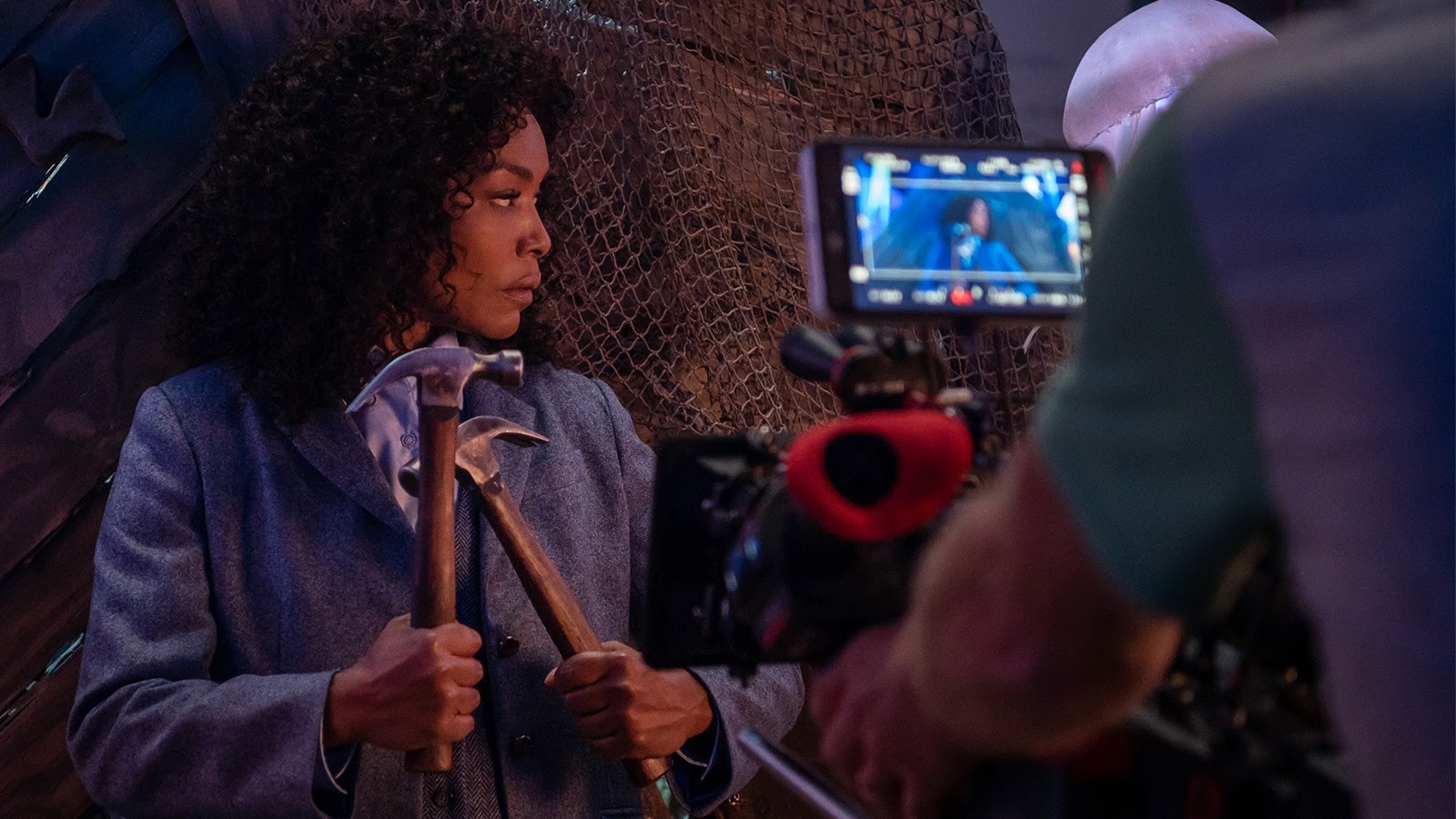
HULLFISH: Yeah, and the girls got their chance to see some cool stuff. That’s awesome.
One of the things you mentioned was how close you have to cut some of the frame stuff because of slow-mo and needing to see a punch land. I was thinking about that with the scene in the bowling alley with the bowling balls. I thought, “You have got to know when a bowling ball hits somebody’s head that either it’s a rubber bowling ball or that they’re going to kill someone.”
DE TOTH: Karen Gillan was fantastic. She really rehearsed a lot to do her action and she did fantastic. I hate to disappoint, but these were actually rubber bowling balls, but she’s very strong. She’s a very strong woman and I’m sure she’s very capable and had they given her real bowling balls, she probably could have pulled it off. But no bowling balls were harmed in the making of this action sequence.
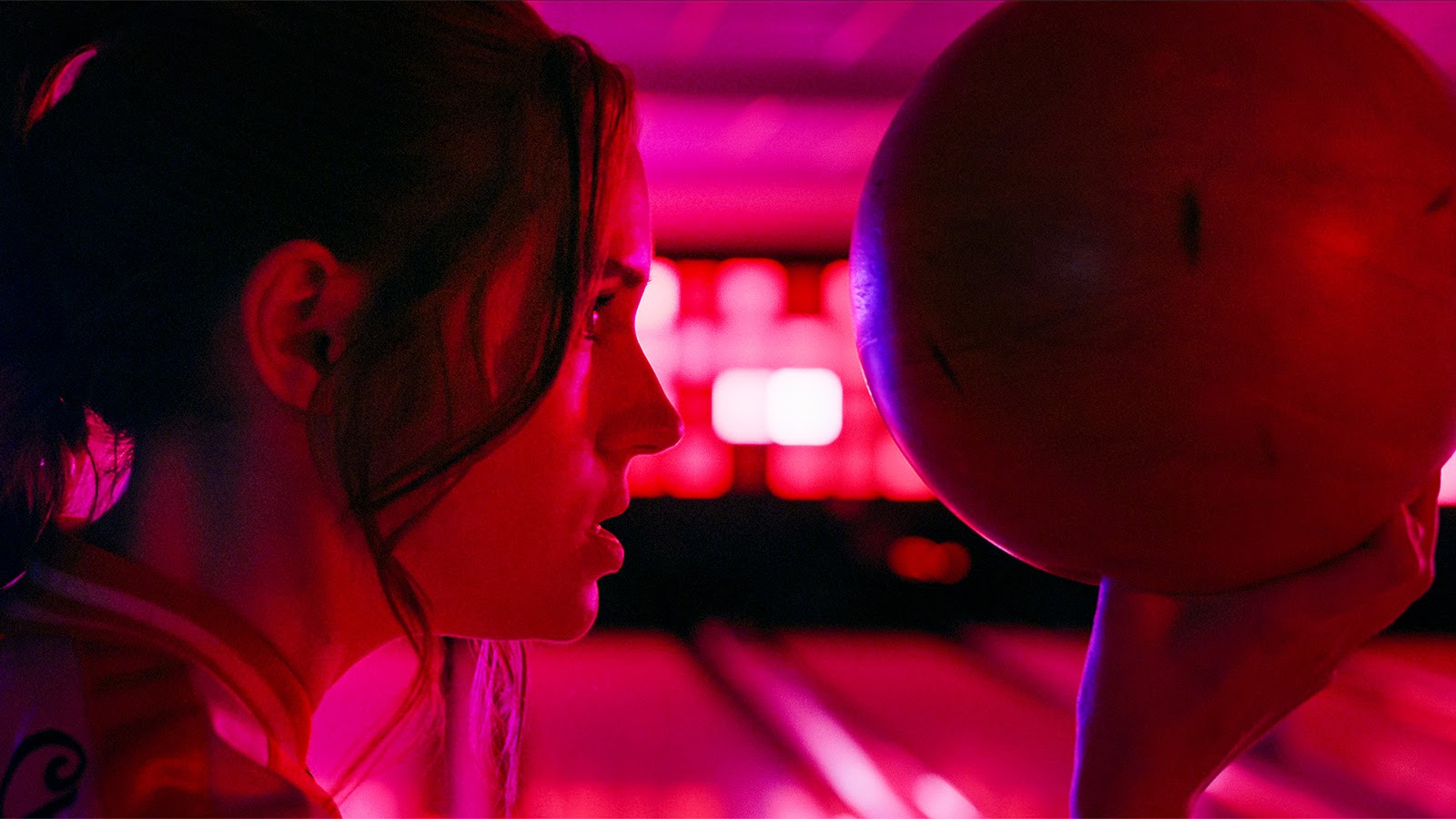
HULLFISH: Possibly some actors though…
That bowling alley fight starts with what is clearly patterned as a Western gunslinger stare down.
DE TOTH: Absolutely.
HULLFISH: Can you talk about editing that and making those decisions and how fun that must have been?
DE TOTH: Oh, absolutely. The villain himself looks like a character out of a Sergio Leone movie. You put a hat on him, just spritz a little sweat on him, turn the color palette to browns and beiges, and all of a sudden it’s like Once Upon a Time in the West or The Good, Bad, and the Ugly. Even the delivery is intentionally over-the-top. It’s a complete wink to a Western showdown. Even her looking to the left to the right, to the choice of angles. Navot really loved the Western, and he was very intent on making it a Western shutdown. This is the classic showdown. This is absolutely the moment. So, it was a lot of fun and we actually even temped at one point with Once Upon a Time in the West [whistles].
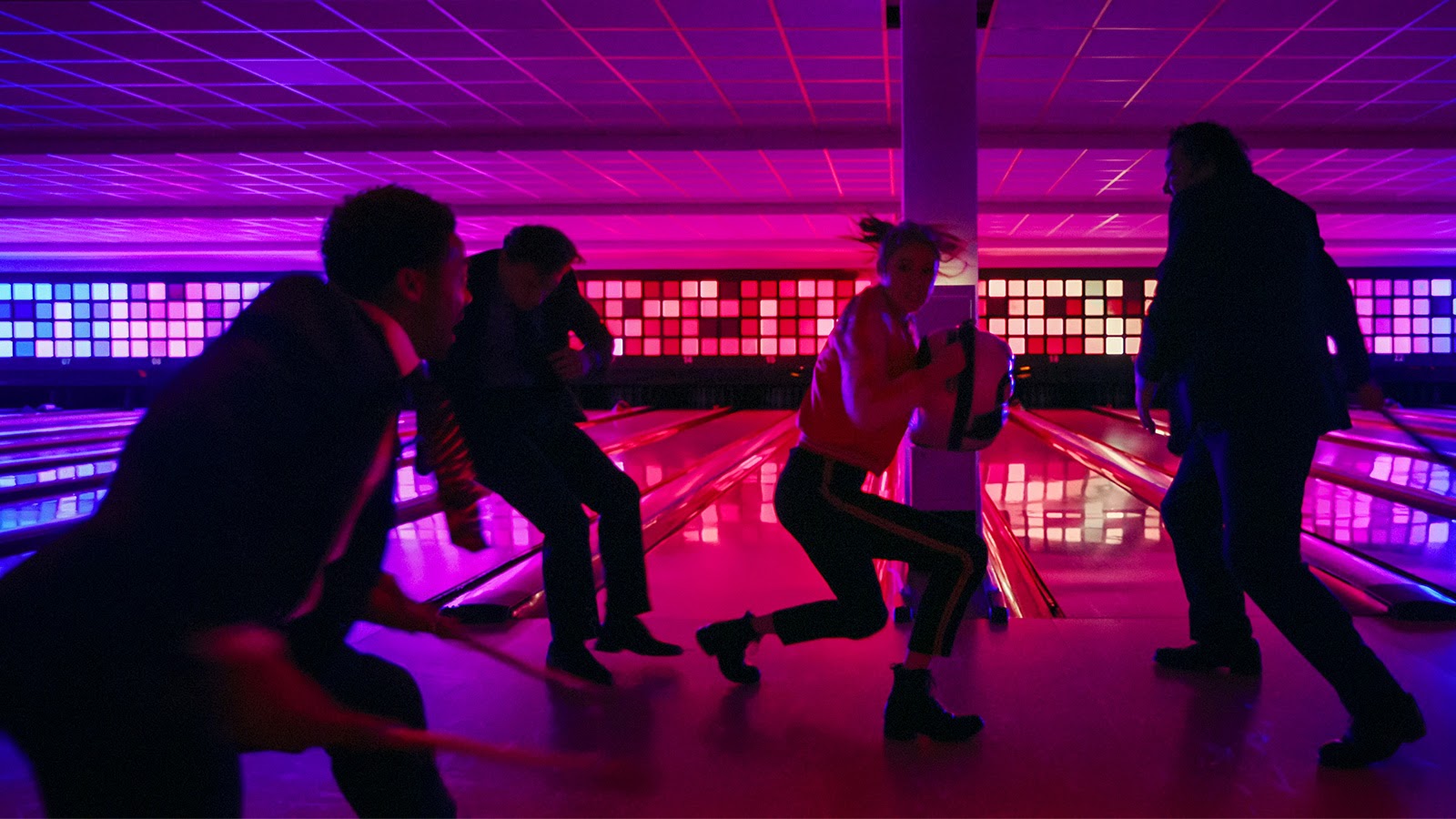
HULLFISH: I was gonna say all you need is someone whistling in the background and there you go…
DE TOTH: Absolutely. We temped with that and we played with that, but of course that choice with that look in the bowling alley just didn’t work simply because everyone immediately recognized the music and it became about the music as opposed to the story, but still it worked really well.
HULLFISH: So, I would think the other tricky thing with a broader idea is the tonal shifts because there’s great comedy, there’s all this action, there’s dramatic stuff, and sad stuff. Talk to me about trying to determine how to lay that stuff out in the broader scope of the movie so that you’re not getting whip lashed, and that you’re not stuck in comedy for 45 minutes in the middle.
DE TOTH: That was one of our challenges because it’s not the most subtle movie, in that respect. It’s quite broad just in its presentation visually. By the way, it was visually stunning. I think our DP did a fantastic job, and we’re very lucky to work with one of the best. Also, I think it was a fine line to try not to be too over-the-top in the storytelling of it because then I think you tend to lose the audience.
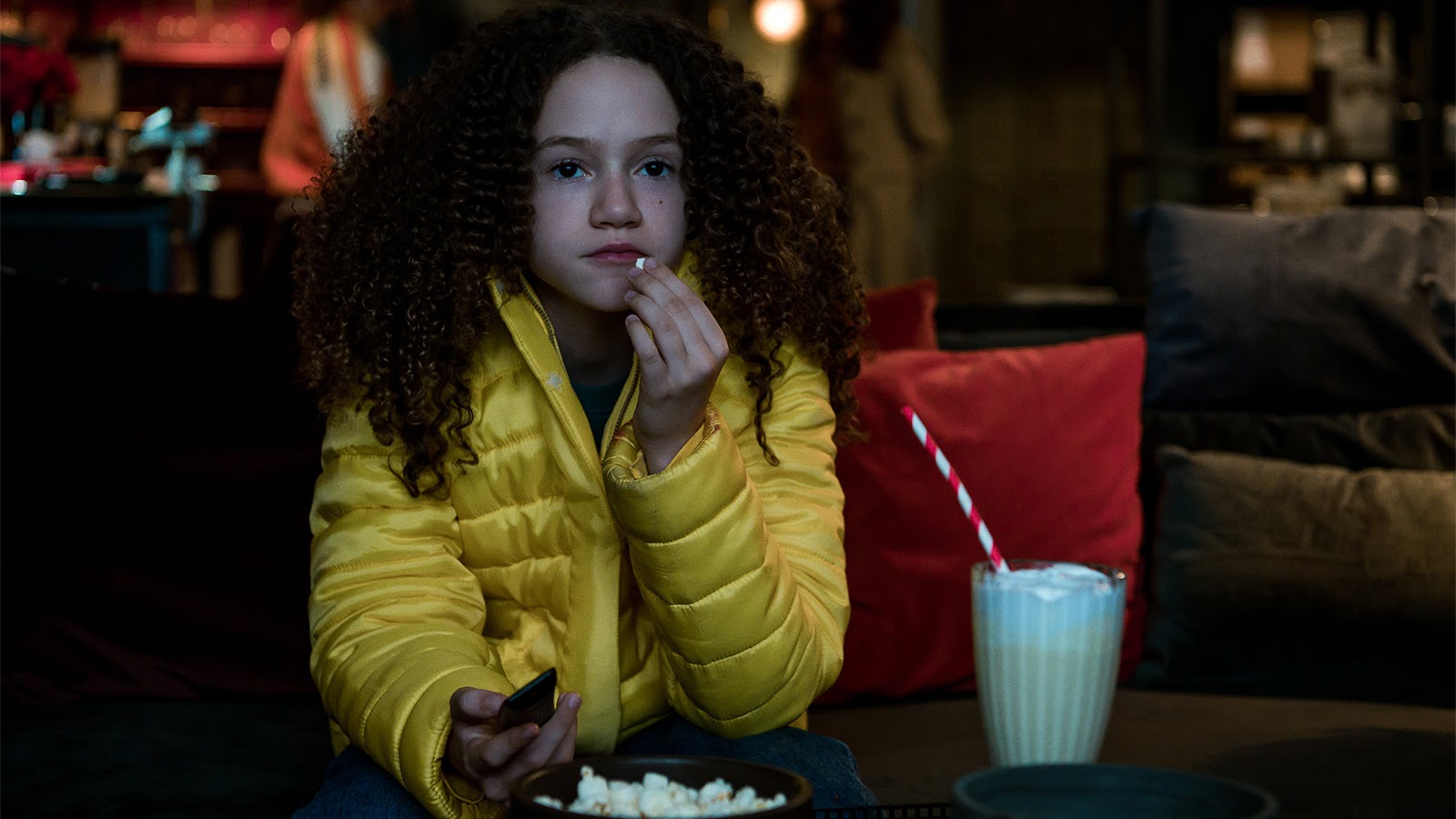
In essence, the girl seeing her father being shot dead before her eyes is pretty deep and serious stuff, especially now in this political climate. You have to be not political but contextual. The violence, guns, and children losing their parents is a very tricky thing to present in a movie, and it’s becoming even more so I think with gun violence increasing. So, threading that needle between keeping it palatable and not just being over-the-top was a balancing act. Navot and I had a lot of conversations about it not being too broad and trying to find an easy landing, a long runway, dramatically to be able to land the comedy plane and let it taxi into a place of gravitas, and then a long runway to let it take off.
But you’ll also notice that there are some moments where we shift very quickly into a moment of comedy. That, in essence, is one of the rules of comedy: surprise. You could have a moment that’s very serious and it helps to throw in a tiny bit of comedy. But we had conversations about trying to thread the needle for that because Sam’s journey is somewhat dramatic, but mainly it’s the little girl. Her journey is horrific. Ultimately, we’re also presenting the evolution or potentially the birth of another killer.
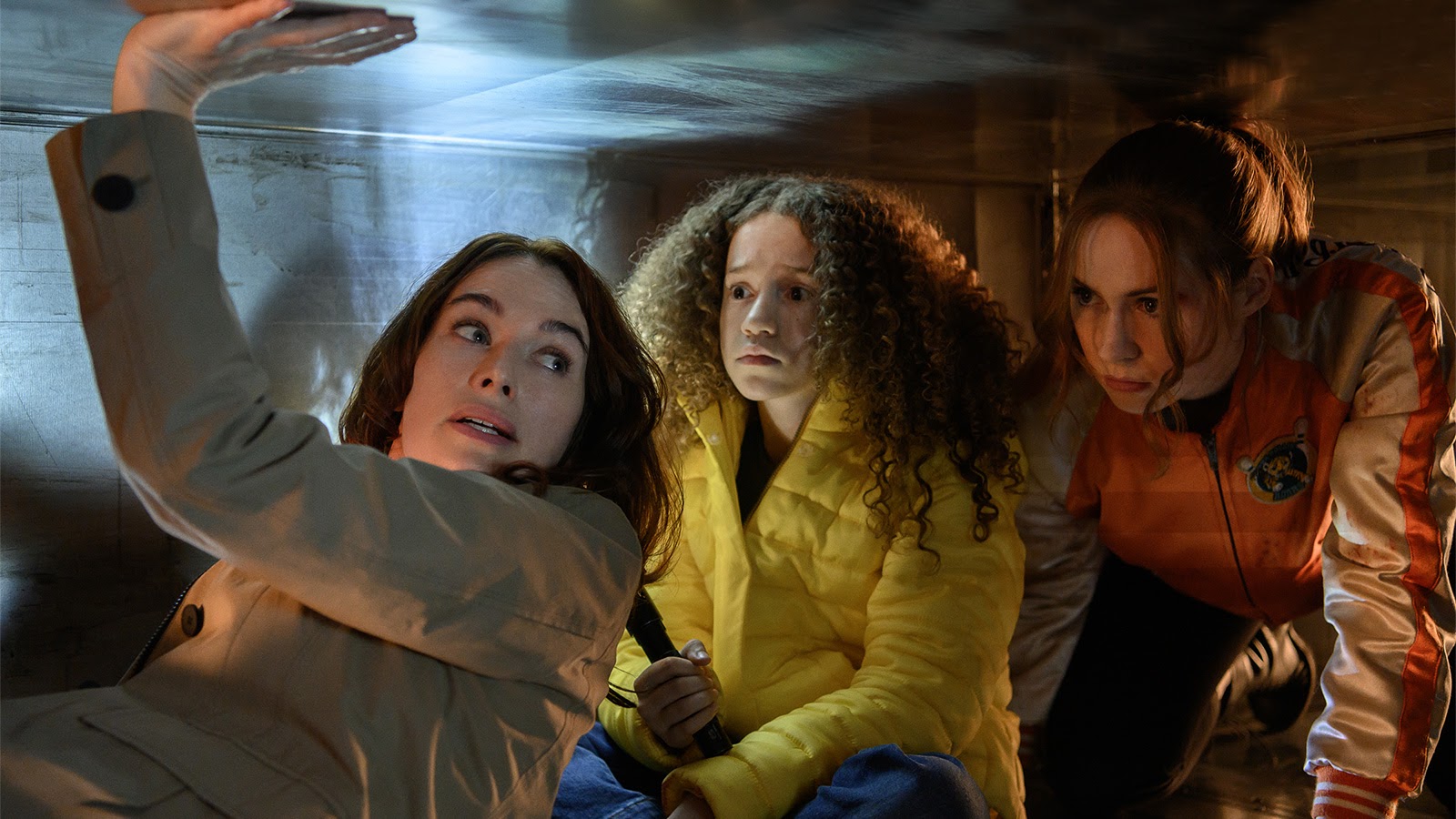
Again, this is a highly stylized world. This is not reality by any stretch. This is not meant to be reality. This is not meant to be an example to anybody of normal life. So, in a world where there are criminals and associations of killers where they go to the diner and they check in their guns, some people will draw a parallel between John Wick and the hotel where people leave their guns and you can’t come in and shoot in that place. It’s a different world. So, in that context, you can accept that this little girl will perhaps end up becoming a killer, but it’s complicated.
To quote Karen in the aftermath of the dentist’s office when she’s asked, “So are you a serial killer?” and she says, “No.” “But you kill a lot of people, don’t you?” She says, “I do, but that’s complicated.” I think that embodies the movie as well because it is complex. If you analyze it deeply, it’s highly disturbing, but if you buy into the ride and you accept that this is a parallel universe, then it’s maybe more fun
HULLFISH: One of the things I love to talk about is context as far as editing is concerned compared to the lack of context that you have when you’re cutting dailies. What were some of the things that you thought you cut beautifully in dailies or definitely felt like they were working for you in dailies, and then when you saw them in the context of the whole film realized something had to change whether it was the whole scene coming out or that the scene had to be recut because of the scenes around it?
For me, one of my least favorite stages or parts of the process is actually dailies.
DE TOTH: It’s interesting because that’s a personal approach. For me, one of my least favorite stages or parts of the process is actually dailies. I don’t like cutting dailies so much because there’s never enough time. You don’t have time to analyze it. You don’t have time to really get into it. You don’t have time to really focus on it for me.
I was very fortunate to be raised, so to speak, editorially by Neil Travis, who was my mentor and like a father to me. Neil won the Oscar for Dances With Wolves. We worked together for 7 years, and he loved dailies. He loved putting the first cut together. Although I love the process of interpreting the footage, I prefer the second part of it which is when you take the jigsaw puzzle and you redo it and you can reinvent it and then can really look at it, but I think that there’s an improvement in technology now where you can actually bring in the video tap to the system. I find that to be a better process for editing dailies because you can see it as it unfolds.
For example, the current paradigm is: let’s say they shot all day yesterday. By noon today, I get 8 or 10 hours worth of work, which amounts to about 3 hours worth of dailies. So by noon, I get the dailies and I have to look at them. That’s three hours’ worth of looking hurriedly because I know that I have to cut them. So, by the end of the day, I’ve really had four hours to cut. If I’m getting the dailies as they’re shooting them every take—each take takes, say, two or three minutes to shoot, then there’s about five minutes to reset—that gives me three times the amount of time to look at that take, identify the parts that work, cut it in, and wait for the next day if there’s something worthy in that first take. Not to mention, I can see the evolution of it as it occurs as opposed to trying to interpret it after the fact.
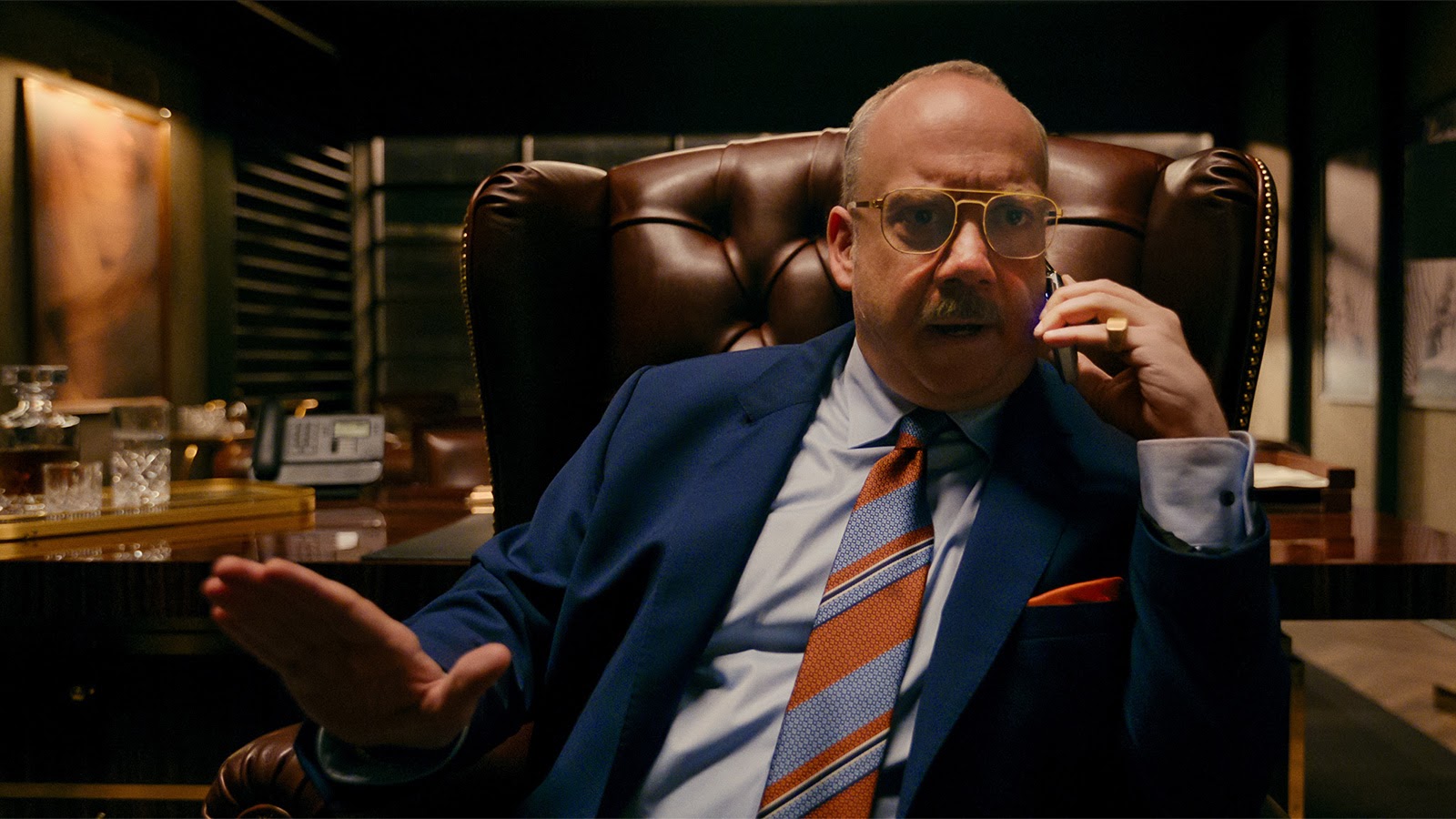
So back to your question of cutting dailies. How do things change and how much has changed? On this particular project, the opening sequence. We started with the diner, and we realized that it seemed like a good idea at the time, but in the end, the flow of it was slow, it was disorientating, and it was confusing. On its own that scene works, but as an opener we realized it didn’t. It just threw you right out of the movie before you even started. So, that’s why we ended up changing it.
HULLFISH: I know that there are people who use the technology you’re talking about. I know Tim Burton likes to feed his production straight to editing while he’s shooting. Do you know about Frame.io Camera to Cloud?
DE TOTH: Oh, no, I don’t know that one. In this case, we used QTAKE. It’s funny because I was always completely opposed to editing on set. It’s old school. Even Neil said, “I want to be as far away from production as possible. I want to do my thing. I want to be behind the curtain.”
But then on Commuter, there was this one particular action sequence that I think was 12 takes which were meant to be stitched together and appear to be a oner. So, it required immediate decision-making, and since this was not a motion control camera, we had to figure out if we could stitch these things together. They set me up on set. Basically, it was a direct connection from the video assist to the Avid, and they just ferried the takes in. As soon as it was done, I had it. So, in this situation, when I first arrived they were doing some second unit tests and they were doing some preliminary shooting of some action bits, but we didn’t have the cutting room set up yet.
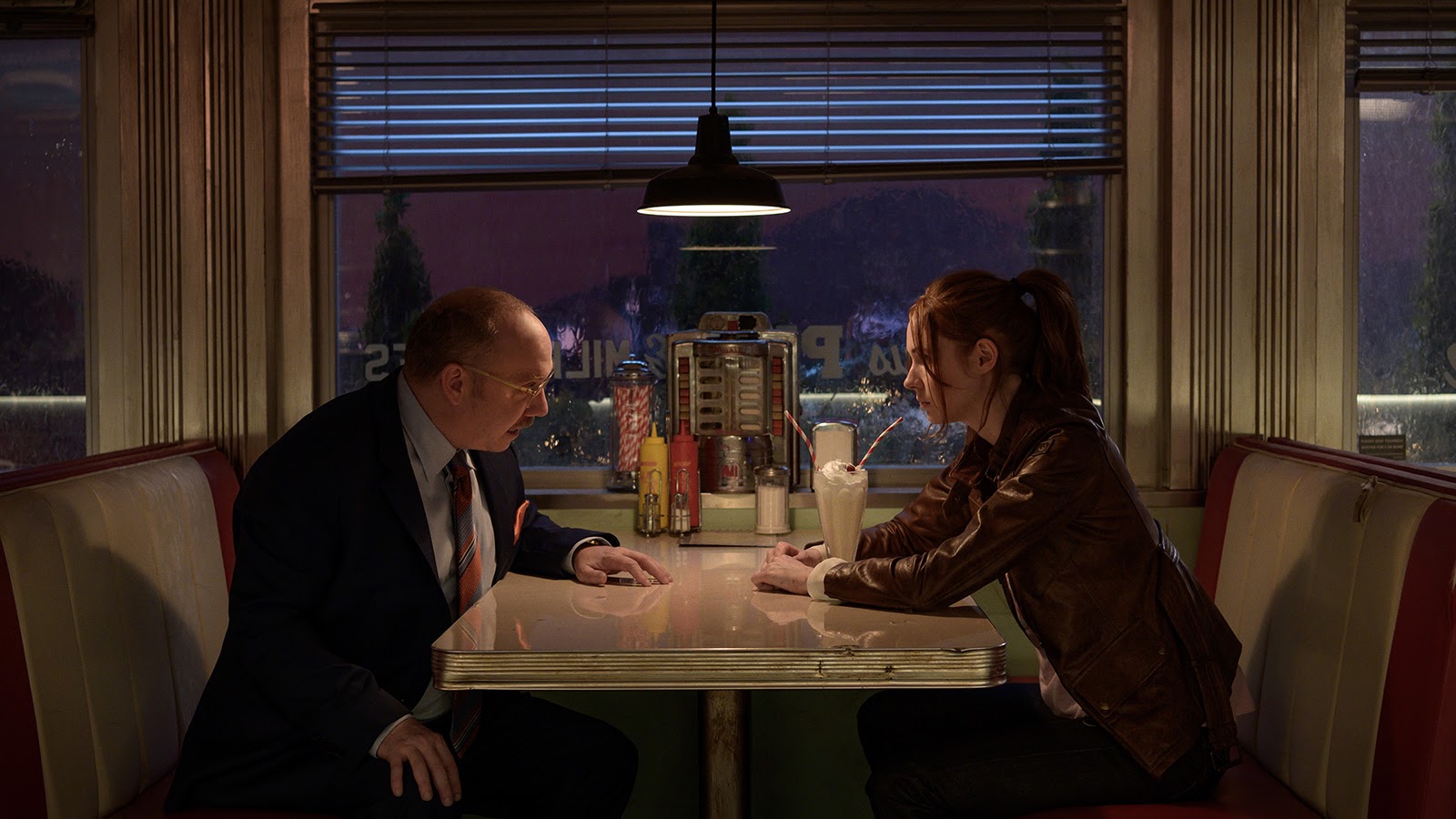
So, they hooked me up to something called QTAKE, which is interesting because it’s a whole other industry now, and so they charged a fortune for this. We’re now Manhattan Beach Studios, which is wired exactly the same way as Pinewood Studios is, which is where The Commuter was. Here, it’s just a matter of connecting a cable to something—which this whole place is completely wired with fiber and everything, so it would be very easy—but they’re having a hard time because QTAKE has proprietary licenses. So, what would literally be a matter of a technician plugging in two things and us figuring out the rest, now they’ve hijacked this and they’re going to charge thousands per week just to do that. But this technology I think is very helpful. I love doing that for the reasons I explained. I’m hoping that on the next project we can achieve that.
HULLFISH: Well, check out Frame.io because Frame.io is doing the exact same thing using Teradek on-camera wireless transmissions.
What kind of temp music did you use? Because, as you pointed out, it’s so genre-bending. When I’m doing a film, I think, “It’s a family drama. What other family dramas can I go grab a soundtrack from?” This would make me think, “Okay, every movie in the history of mankind I’m going to bring in the temp score.”
DE TOTH: This was one of our biggest challenges. Navot has a lot of ideas. So, a lot of it was, “Let’s try this.” Also, some of the ideas were conceived in the writing of the script, and they seemed to work on paper. So, reading the script and listening to it seemed to work together, but then when you play them together with the visuals it was different somehow than his imagination, as it always is. You write the script and then you shoot it, and it’s sometimes a completely different thing. It was an ongoing process.
I believe that this was one of our challenges because there was one piece that was always set that always worked: the slow-motion finale action bit. That was always going to be that piece, and that worked really well. That was one of the great moments in the movie I think. It’s just so delicious and so over the top. The shooting, the guy, the milkshake, and the machete flying in the air and everybody being shot up. To me, that’s one of the best moments visually and musically in the movie.
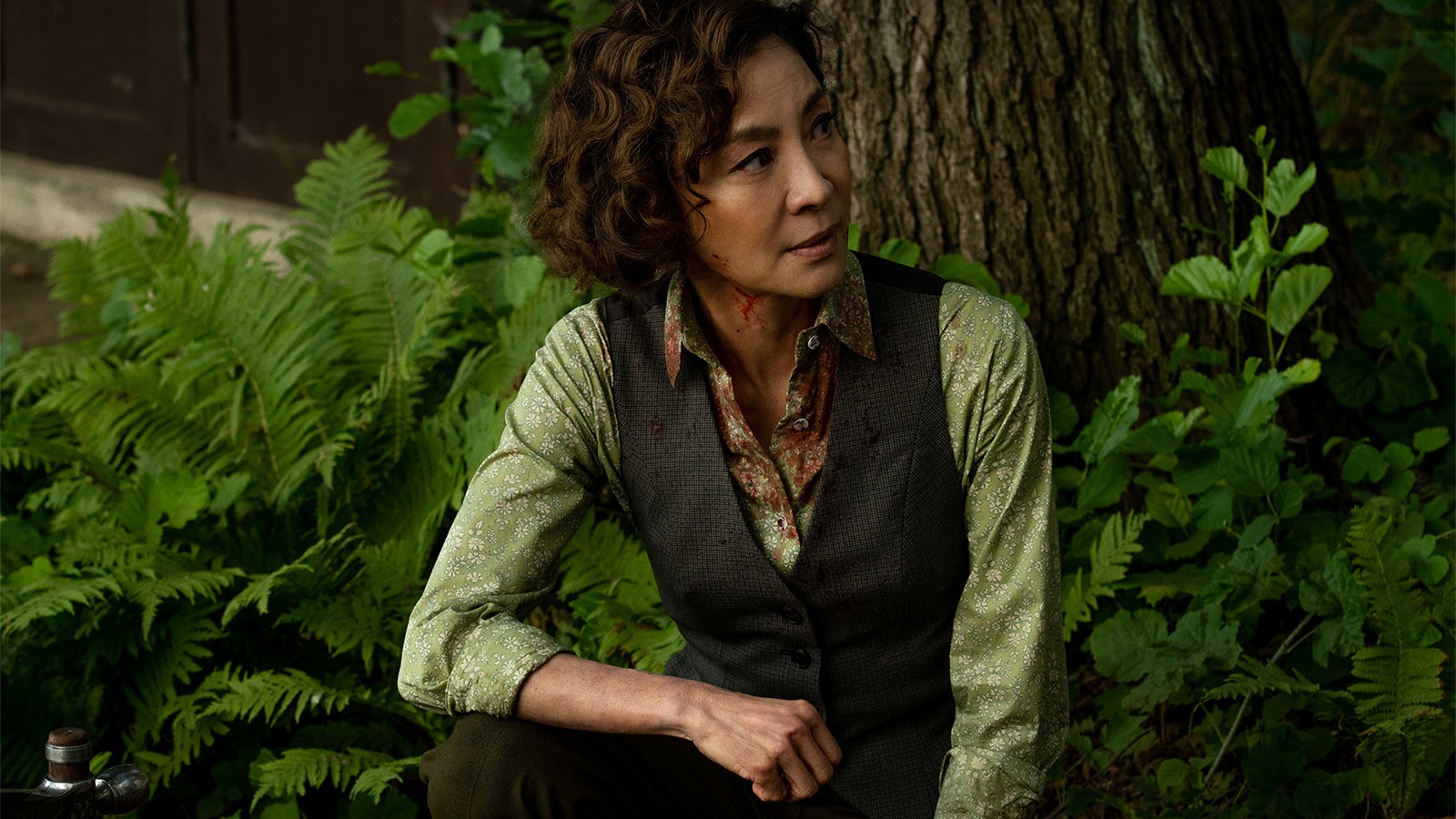
HULLFISH: And almost a oner, or a oner for a long time.
DE TOTH: The traveling side to side is a oner. That’s a complete oner. That worked really well. It’s interesting—and I know you didn’t ask that but I want to interject this—because Navot really wanted to cut this movie on Premiere Pro, and they fought it tooth and nail. I didn’t know Premiere Pro that well. I am on the Adobe Hollywood Advisory Board trying to help them bring it to the forefront. I wasn’t completely comfortable doing this, but during the pandemic I cut two movies on it and I became a staunch Premiere Pro advocate. Now I find myself working on Avid and it just feels like I’m working in the past. Literally a long time ago in a galaxy far, far away.
HULLFISH: What has been the course of your career? You were talking about being an assistant to Neil Travis. So, did you start in film or did you start on Avid or Lightworks?
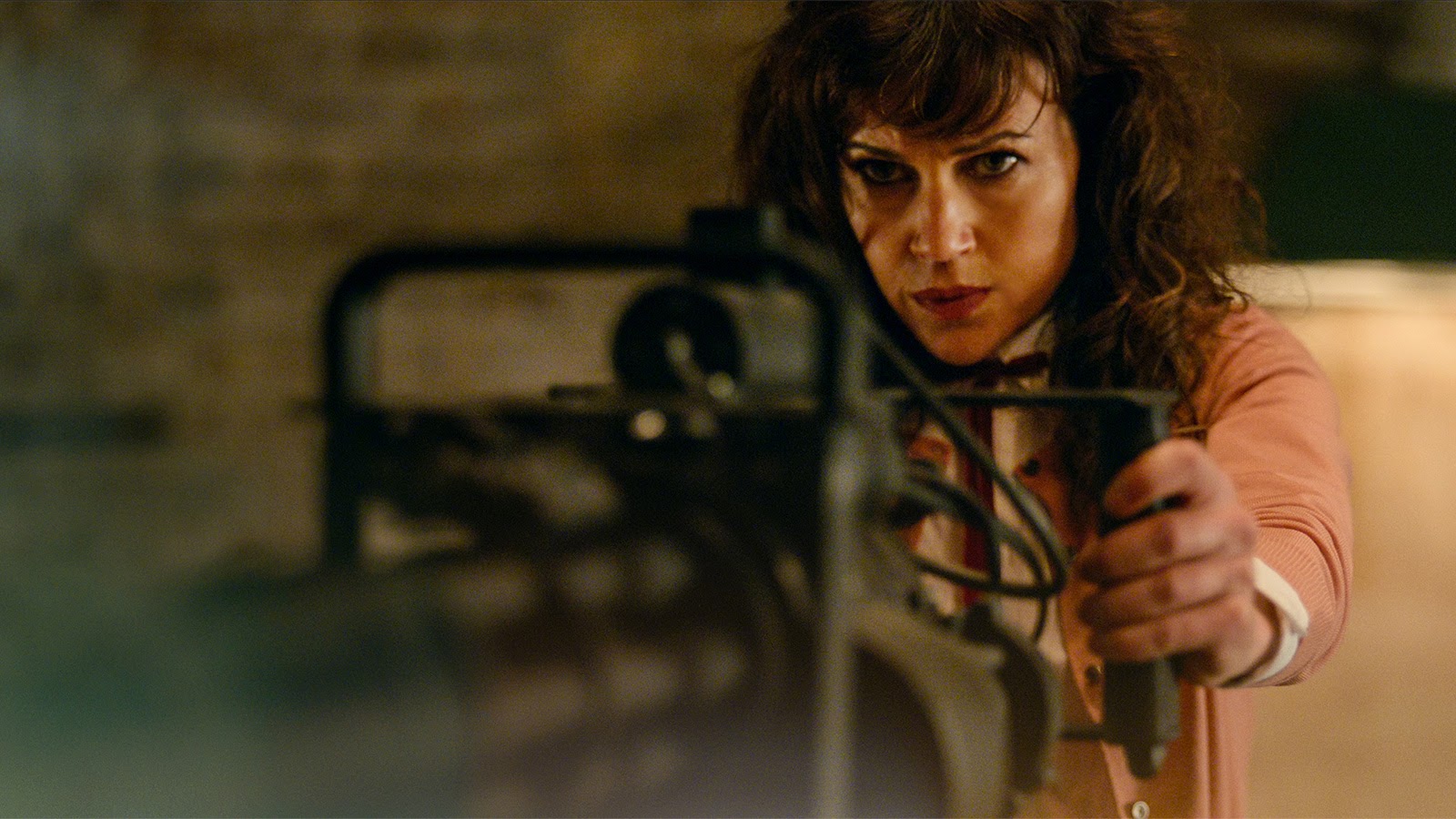
DE TOTH: No, I started on film. The first film I worked on was a movie called Eye of the Storm with Lara Flynn Boyle and Josh Brolin produced by Roland Emmerich. Roland, who went on to direct Independence Day and all these mega-blockbusters, this was his first producing job. He had directed one movie in Germany called Moon 44, but he was between projects and it was his foray into this.
So, after six years of restaurant experience later, I realized that maybe I should reformulate my plan.
It’s funny, I was hired on the job as an assistant editor because my father was a film director a while ago. He had worked on a movie called Superman with Dick Donner, and the visual effects editor on this is named Michael Duthie. I had a brilliant plan to become a director, which involved acting. Don’t ask me why, but I thought that was a brilliant thought because all you have to do is just show up, they give you a part, you become famous, and then they give you a directing job. It’s that easy. So, after six years of restaurant experience later, I realized that maybe I should reformulate my plan. I decided to look into post.
So, I put out a whole bunch of feelers to a whole bunch of different people, and my father was an old school Hungarian film director who believed in being tough on his kid, so he never opened doors for me, for which I’m very thankful because I stand on my own two legs. I’m happy for that. In the process of putting out feelers, I told my father that I’m going to direct a short and it’s going to be my entree. He said, “Don’t do it.” I said, “What do you mean ‘don’t do it’?” He says, “Editing.” “What do you mean by editing?” He said, “You have studied acting…” because luckily I did study acting for six years, so I was fairly lucky. For somebody who was not passionate about it, I learned quite a bit. Then I did some production work, I ended up being a production manager on a Western mini series called The Adventures of Lucky Luke with Terence Hill.
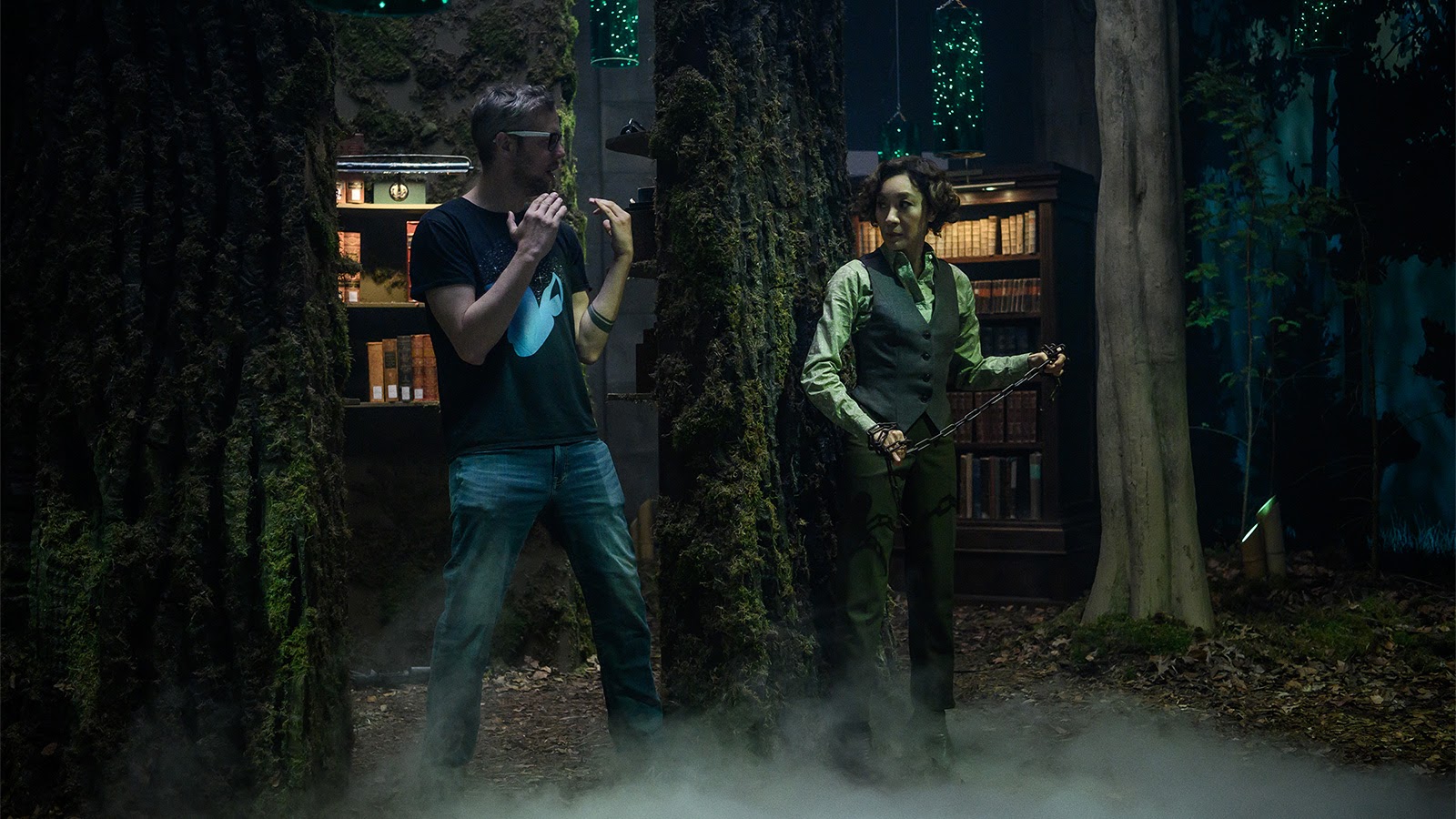
I said, “I’ve learned everything, and I’m now I’m going to go make a movie.” My dad still said, “Don’t do that. Have I ever helped you?” “No, you’ve never helped me.” “I’m helping you now. Any director worth his salt will have spent some time in the cutting room.” I said, “Really?” He said, “I’m helping you. Go do that.” I listened because he had never really given me this type of advice before. So, I put out the feelers.
I was working at a bar and a friend of mine who worked in production was friends with an editor named Michael Duthie, who I’d never met before, and she introduced me. He said, “De Toth. Your name sounds familiar. Is your father’s name Andre?” I said, “Yes.” He said, “Oh, I worked with him a long time ago, so that’s great.” So, I made him a margarita, he left, and six months later, I get a call from Michael who says, “Are you still looking for editing work?” I said, “Absolutely.” He says, “Okay, well I can hire you as an apprentice on film. Have you worked on film before?” I said, “I have never worked on film before,” and he says, “That’s okay. We’ll figure it out. Come on in.”
So, I walked into the room and met Peter Elliot, who to this day is an editor and we became really good friends after this. He’s in the corner of the room winding through dailies on a Rapid, a four-plate KEM. I walk in thinking, “Well, I’ve worked a lot in production. I’ve been on sets. I should be able to figure this out. I can bluff my way in.” So, he says, “Have you ever worked on dailies before?” I said, “Of course I’ve worked on dailies. Yes. What do you want me to do?” Then he says, “Why don’t you do some reconning?” At that moment in my life, the only time I’d ever heard the term “recon” was in the movie Platoon, and people going on recon missions.
Oh, standard stuff. It’s a single-sided four-perf wide on the mag. Double-sided two-perf clear on the picture.
He turns back and starts working on the KEM. Then I say, “Can you just refresh my memory? Recon. How do you like to recon?” Without skipping a beat, he says, “Oh, standard stuff. It’s a single-sided four-perf wide on the mag. Double-sided two-perf clear on the picture,” and he goes back to work. I’m still standing there scratching my head, thinking, “What does that even mean? Single-sided four-perf wide on the mag.” If you haven’t worked in the cutting room, those things mean nothing to you.
So, he tells me that and after a while I say, “Okay, fine. I’m sorry. Recon. What does that mean?” He says, “You’re reconstituting the film. You see those bins over there?” There’s a whole bunch of bins filled with trims. He says, “You take those bins and you put them back in the film in the dailies. I said, “Great. Perfect. The dailies.” I’m standing next to a bookshelf filled with pizza boxes with numbers on the sides of them, which I have no idea what they are. So I say, “Dailies. Where would the dailies be?” “They’re right next to you on that shelf.” “Oh yes. Of course. Those.” He says, “The red ones are the sound. The black ones are the picture.” Then, behind me is an assistant’s bench with the split reels and a sync block.
Now, if you’ve never touched those things in your life—which I hadn’t—they might as well be like high-tech scientific devices. How do you even open a split reel? I have a roll of dailies and I have a split reel, which I don’t know how to open, and I’m trying to figure it out. So, finally he turns around and looks at me with his deadpan look and says, “You have never done this before, have you?” I said, “No, I haven’t done this before.” He was so angry at first. I said, “I will work through lunches. I’m so sorry. I’ll do my best.” After about three weeks, I figured out how to splice and how to do that. Then, for about three more projects, I worked with Michael and Peter and we became very dear friends.
Then, I decided to make a short film. By then I was working at a company called Carolco which is where they made Terminator and Chaplin and a whole bunch of movies. I was friends with the head of post there and they lent me a room. I was going to shoot the film on 16 mm, but 16 and 35 are completely different worlds in posts with different labs and different equipment. I realized that I had no contacts to help me fund this thing. So, I heard about this new software which was coming on the scene, which was Avid. They were trying to dethrone Lightworks because Lightworks was the dominating force in digital nonlinear editing.
So, I cold-called this man named Robert Cloyd, who was the head of Avid sales for the United States. I said, “Hi, my name’s Nick De Toth. I’m working at Carolco. Renny Harlin is down the hall, Paul Verhoeven is down the hall, and Roland Emmerich is down the hall. If you lend me an Avid I can set up a showroom for you guys,” and they’d lent it to me.
So, I started working on it and within about 8 weeks, I went from calling them about 4 times a week, to them calling me 3 times a week by that 8th week. The first week I was asking, “How do you do this? How do you turn this thing on? How do you work that?” Then, because I was doing a short and was doing everything myself, I asked, “How do you record into the thing?” All these things that we take for granted today were quite complicated and had never been done before because no one had tried that.
HULLFISH: What year was this? ’91, ’90?
DE TOTH: It was about ‘90. I think it was version three.
HULLFISH: Yeah, ‘90.
I was an assistant and we were digitizing film. We had a whopping 50 gigabytes I think.
DE TOTH: I worked on Paul Verhoeven’s movie, Showgirls, which was with Mark Goldblatt, who was also a very dear friend and a wonderful editor. I was an assistant and we were digitizing film. We had a whopping 50 gigabytes I think.
HULLFISH: I was going to say 8 [laughs].
DE TOTH: We had 3 gigabyte JBODs. I think we had 20 of those. It was crazy and they were always breaking. So, I started with film and then after making my short, Avid put me in touch with Bill Hoy, who’s also a friend because Bill went to the Neil Travis editing academy. So, Bill and I are kind of like brothers, but he’s my older brother, much older. Don’t tell him I said that. We met and hit it off.
Then, Neil was a Lightworks editor, but he was hired on a movie called Moll Flanders with Morgan Freeman and Robin Wright Penn at the time. They had already shot the movie and they’d already started editing it on Avid. So, he needed an assistant who knew film and Avid, and I was luckily one of about a handful of assistants who had done both. So, that’s how I got into full-time Avid assisting, and then segued into editing.
HULLFISH: Now you’re strongly in the Premiere camp?
DE TOTH: I loved Avid, but Avid has become bloated and old I think. It’s just the problem of something when it becomes too comfortable, too much of a leader. I think Lightworks did the same and became a little complacent. They were the only game in town and habits became that way. They’re not very responsive. Ultimately, they do the same thing, but after working on Premiere, just the process alone of how you do it is vastly different. Not different in the way that you have to relearn everything. There is a learning curve, but it’s no different than, say, going to drive a car in the UK. You still have to shift gears—or not if you have an automatic—you still have to use your blinker, you still have to stop at stop signs. It’s just getting used to the different layout.
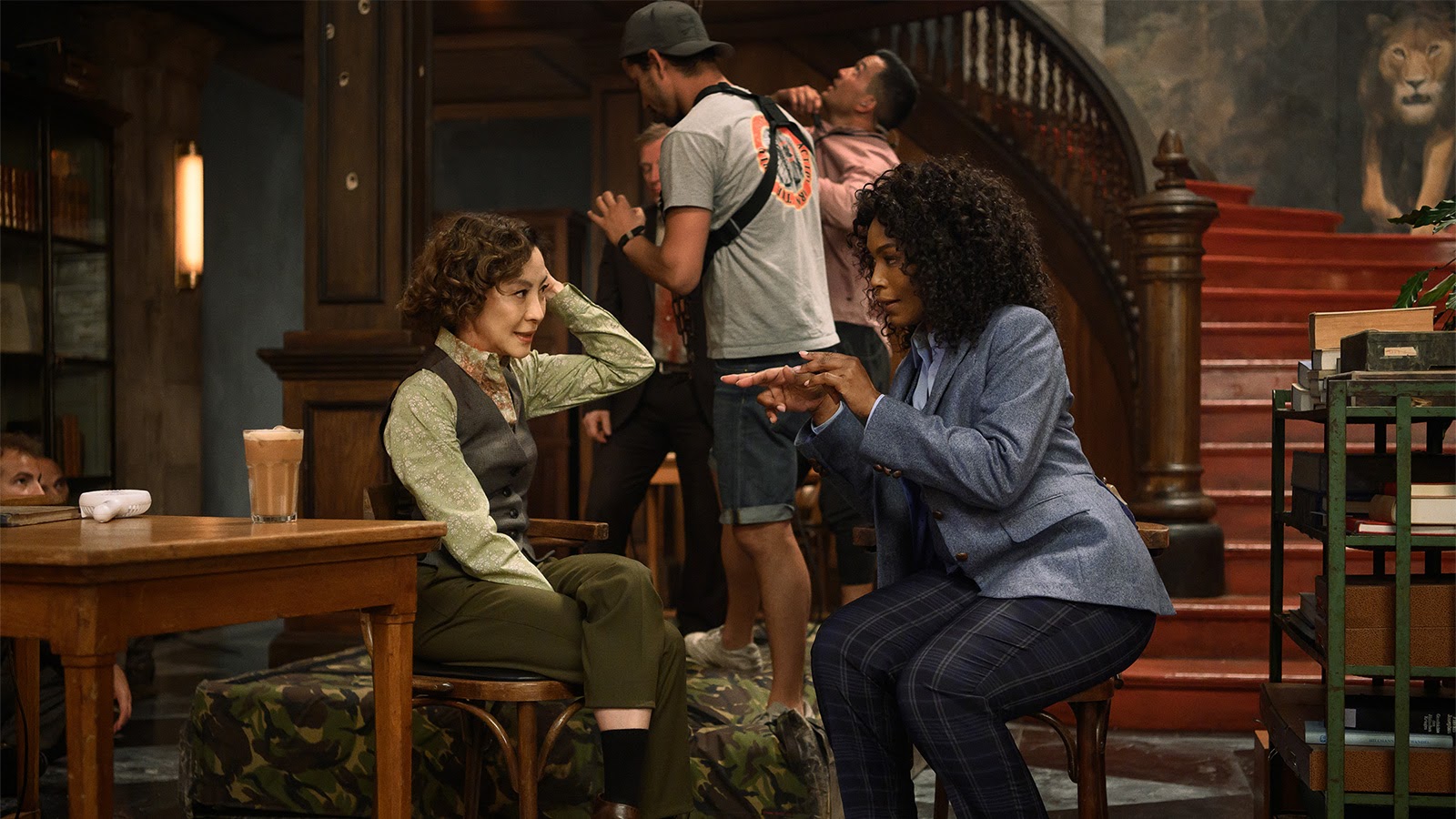
What I found is that I can do something in Premiere about 25% faster I’d say. For instance, sound work is right there in the timeline. Basically, I can go from frame mode to mod mode for the sound work. So, I basically am in Pro Tools mode but in the timeline. I can apply a transition and use Bezier curves to finesse it right there in the timeline. That’s not even possible on Avid unless you go into a special section, but you have to open a panel, then you have to open a sub-panel. So, just by clicks alone, it is truly like death by paper cuts because you click five times and although it doesn’t seem like a lot, if every time you lose 30 or 45 seconds and you add that up over the course of the day, it’s a lot.
I love to do sound work and I like to do visual effects. In Premiere visual effects are all laid out in front of you, you don’t need to nest them, and you can change each and every one of them right there. You don’t have to open specialized panels. Whereas in Avid, you have to open each individual panel to be able to do this. They just started to offer this thing where they’re nested on the left, but still it’s not the same level. Speed ramps are instant in Premiere Pro. In Avid you have to rely on the time warp, which messes up the way it looks. The logarithm that it uses to speed things up is buggy at best, and if you change it, you have to render it.
When you can do something quickly without thinking about it, you can focus on the creative process.
So, all of that combined adds up to about a 20% to 25% loss in productivity and creativity I’d say. Because when you can do something quickly without thinking about it, you can focus on the creative process as opposed to having to open windows and having to move things, click things, render things, and wait for things to happen. For me, it’s just a matter of that. I don’t really care what it is, but I find that I can spend more time creating in my day, or spend longer days because I’ve lost 25% of the day clicking things. Literally it’s just clicking. It’s not even a matter of liking the way it makes the effect. It’s just the process alone of doing it. For me, it’s vastly improved.
I was leery at first of sharing projects, but I experienced that firsthand now. My assistant on the movie Barber, the Aidan Gillen movie, was in London. I was in Berlin. We shared a project via something called LucidLink.
To the editors, myself included, who are a little leery about the learning curve, in the end it’s not catastrophic. The leap you’re taking by embracing this new software is much less dangerous so to speak or scary than it was when you went from film to this. Because going from film to nonlinear was a huge leap. It was a rethinking of the whole process literally down to the way you think. With linear, you had to think in a linear way. This way you can jump everywhere. Just learning the interface was a steep learning curve, but for Premiere, if you know how to use Avid or whatever editing software you use, they all pretty much offer the same options. So, it’s just about learning.
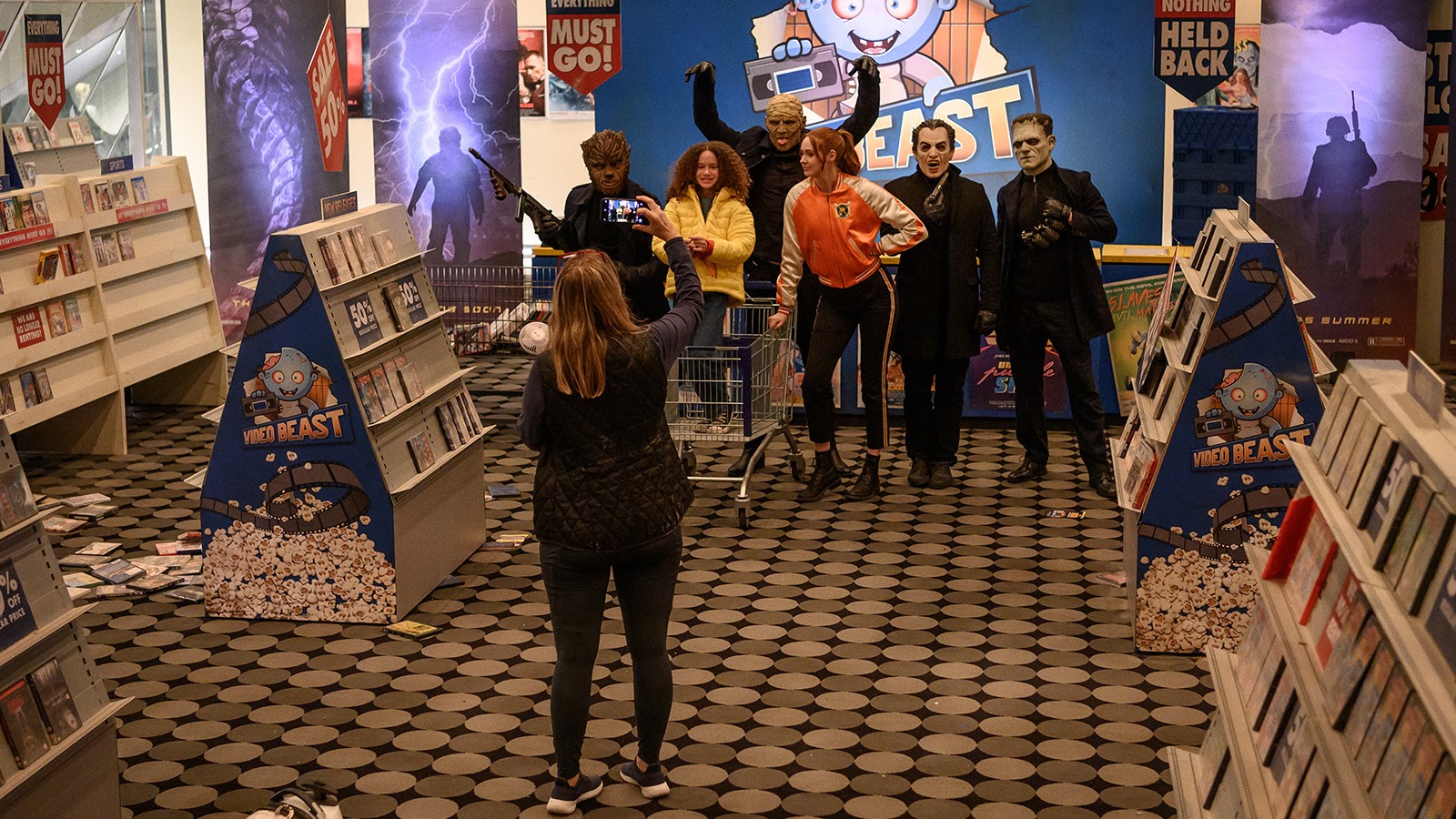
For me, it took me literally about a week, but I’m fairly technical. I think that somebody who was less technical would take two weeks. If they’re confident with their Avid, they’ll be fine in two weeks. Ultimately, it’s not two weeks of downtime. It’s two weeks of frustration thinking, “Oh, how do you do this again? Where is this thing?” Finding the paths to be able to achieve the same level of proficiency in one over the other, but to me it’s exponentially better.
HULLFISH: Lucasfilm was back to Avid?
DE TOTH: They’re on Avid. I think there’s a systemic fear with innovation, ironically. We’re talking about very innovative companies and a very innovative industry really.
HULLFISH: Well, they have their processes. I would think that’s what it’s all about is that they know how Avid works in their workflow and switching to Premiere is going to be a difficult thing.
DE TOTH: True.
HULLFISH: When you were in Premiere, were you working on the new shared projects?
DE TOTH: Yes I was. It basically presents the exact same look as an Avid project. Literally, there is no difference. You can have folders and subfolders with your dailies in there. The difference is the terminology. A bin would be called a project. In Premiere, you work in a production, within the production you have folders, and within those you have projects. Instead of calling it a bin, you call it a project.
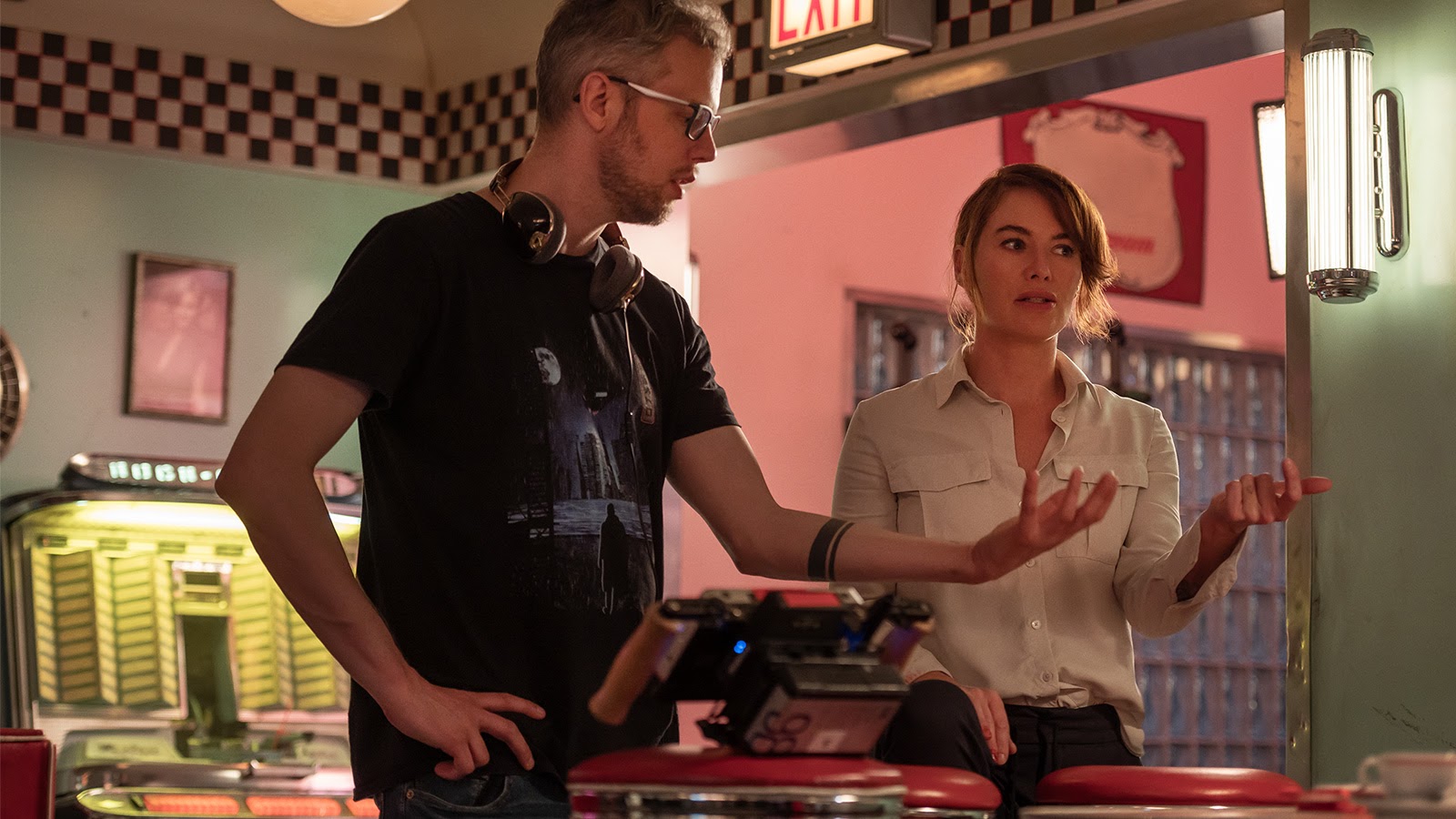
HULLFISH: The production in Premiere is like a project in Avid?
DE TOTH: Exactly. The production is a project and the project is a bin. That’s really it. It’s exactly the same. The benefit to Premiere is that you don’t need to ingest dailies. It reads it directly and it’s non-destructive. So, as far as the memory goes you don’t have to import and create media. Whatever media is thrown at you, you can use immediately. In the import processes it reads the media and creates a database, and that’s almost instantaneous. So that turnaround is faster as well. These days labs will do it for you and they give it to us, but even for them or for anybody, it’s a faster process and it’s easier.
It’s much more forgiving of different frame rates and different media types too. It’s immediate. You can actually even read Avid media, which is funny. you can ingest that without having to create media. If somebody gives you a drive of Avid media, you can read it.
I think the biggest obstacle is—and I’ve spoken to Premiere about this—is that I believe there was a moment where studios have come to both and have said, “Listen, there are proponents for both, and you need to find a way to play well together because right now that is what’s impeding the process.” So I believe—and in a highly politicized world we live in, it’s hard to tell where the truth lies—but in this situation I’m told that Avid is not entirely keen on sharing their code. So the idea would be to start something in Premiere and if it doesn’t work then go back to Avid. You can go from Avid to Premiere, but the return is tricky. Something in Avid doesn’t like taking it back.
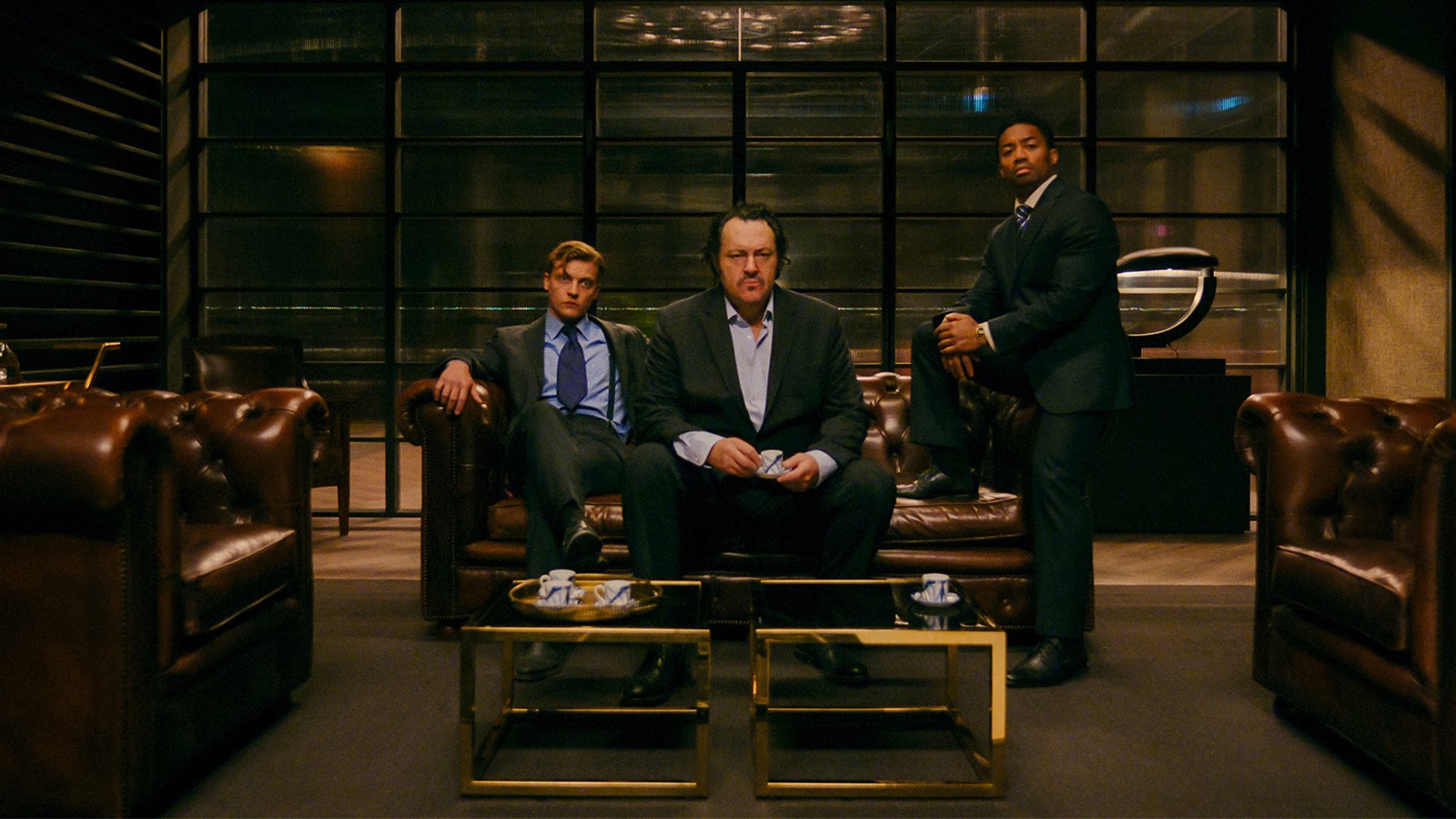
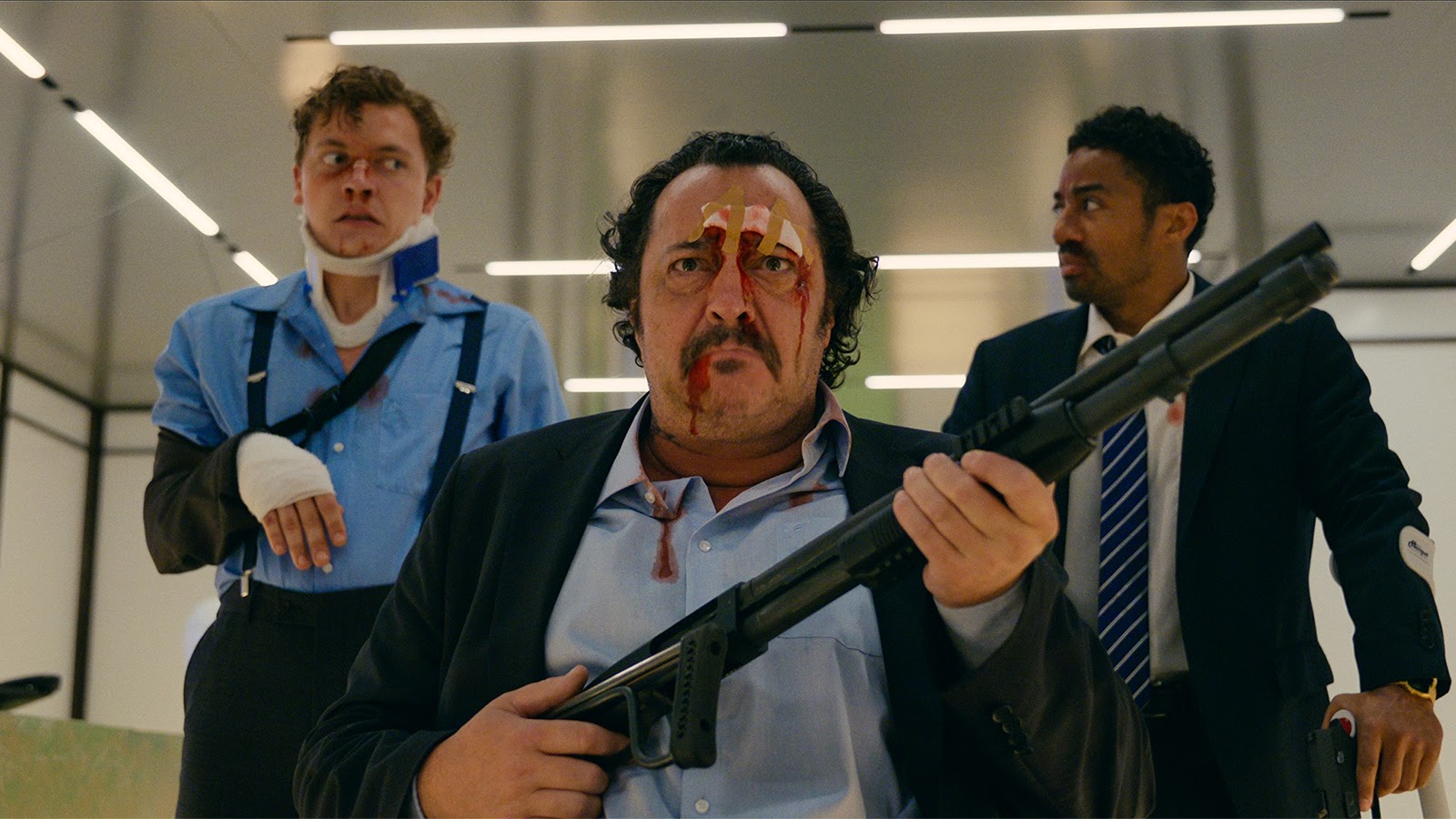
So I think that’s what’s preventing a lot of people from doing it because if they could go back and forth with impunity, then ideally you could have somebody working in an Avid next door and I could be working in Premiere right here. Then we could co-exist and everybody could work with their preferred tools. In the end, that’s what it comes down to. If I’m a better editor and a faster editor with one set of tools, why shouldn’t I be able to use it?
I remember when I was working at Carolco we had the Roland Emmerich film Stargate which was working in one cutting room on Avid. Frank Urioste was working on Cutthroat Island with Renny Harlin on KEM’s. He had hired a wonderful editor who actually cut the original Ben Hur chariot chase to help with some action sequences, and he was editing on a Moviola. So on one head of the hall, he had a Moviola, then you had the KEM, and then you had the Avid. So, you had basically the entire history of editorial progress on one floor. Why wouldn’t that be possible? Why shouldn’t you be able to work with a Moviola or work with Premiere Pro or Avid? Ultimately, everybody was doing their best on the tool that they preferred. That’s what it should be.
HULLFISH: Let me jump back into Gunpowder. Near the end, there’s some intercutting between a group that goes to fight a battle and a group that’s trying to escape. Intercutting is rarely the way it is in the script. Can you talk to me, if not about that specific scene, about when you intercut scenes with concurrent action? When is the best time to get back and forth, or what is a motivating factor to get you from one intercut to another intercut?
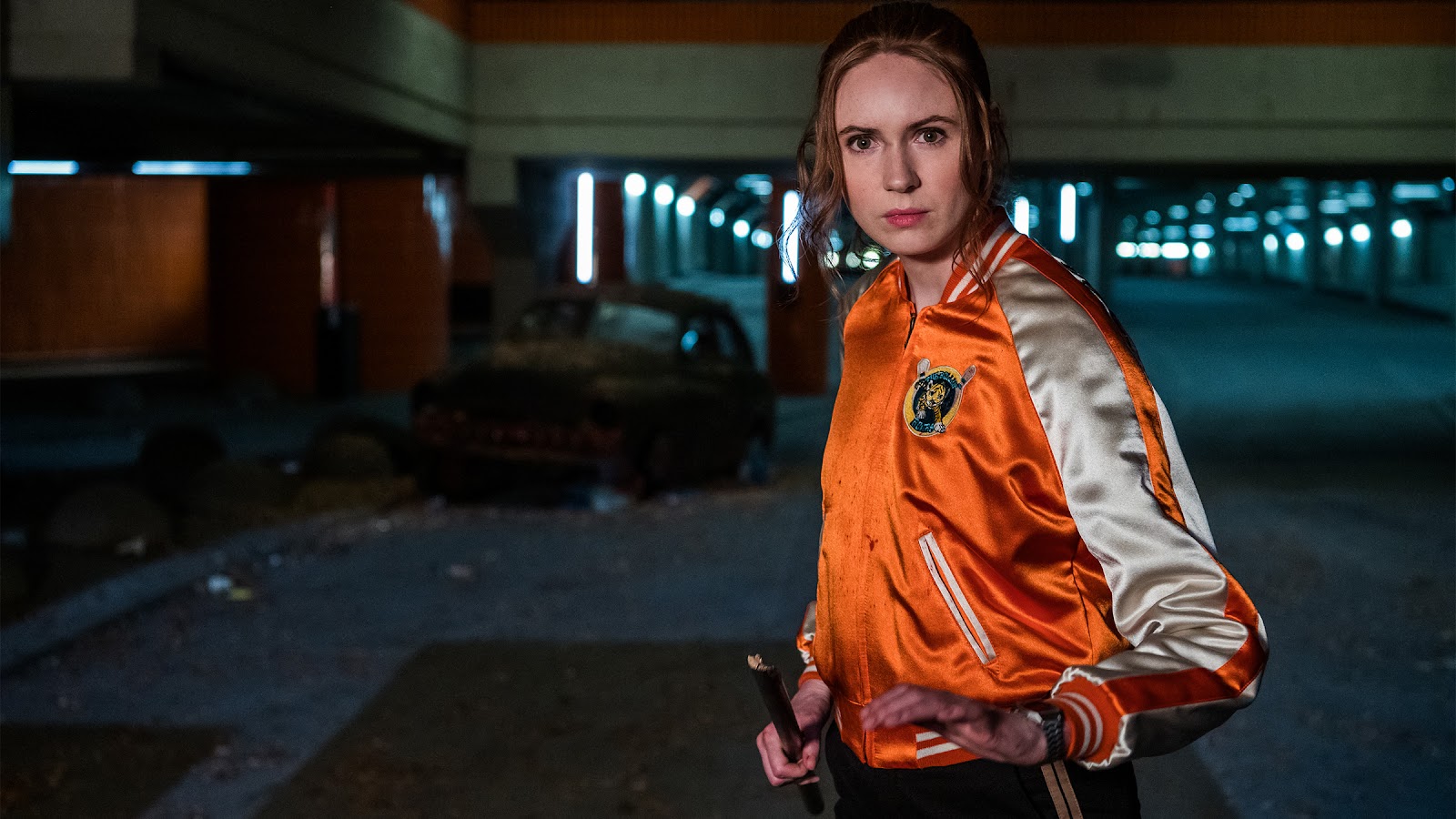
DE TOTH: That’s a very good question because that was something that was in play for a long time. Originally there were some obstacles. As good as they were, some actors were better at action than others. Not by virtue of the fact that they weren’t necessarily naturally good at it, but by virtue of the fact that they may not have had time to train for it. So, in some situations we were asking some actors to perform action bits and they’d had very little time to prepare for this. Therefore, the action itself I wouldn’t say suffered for it, but it was challenging.
So, the concept is that we’re going to have 3 separate fights and specifically it was the enchanted forest room, and then there was the sea room, the oceans room. There were 2 separate fights. Michelle Yeoh from Crouching Tiger was obviously a huge action person with a lot of training. Then Angela Bassett who really hasn’t done very much action in the ocean room. This goes into getting ready to go to the fight as well because there had to be a process of first of all, getting everybody downstairs.
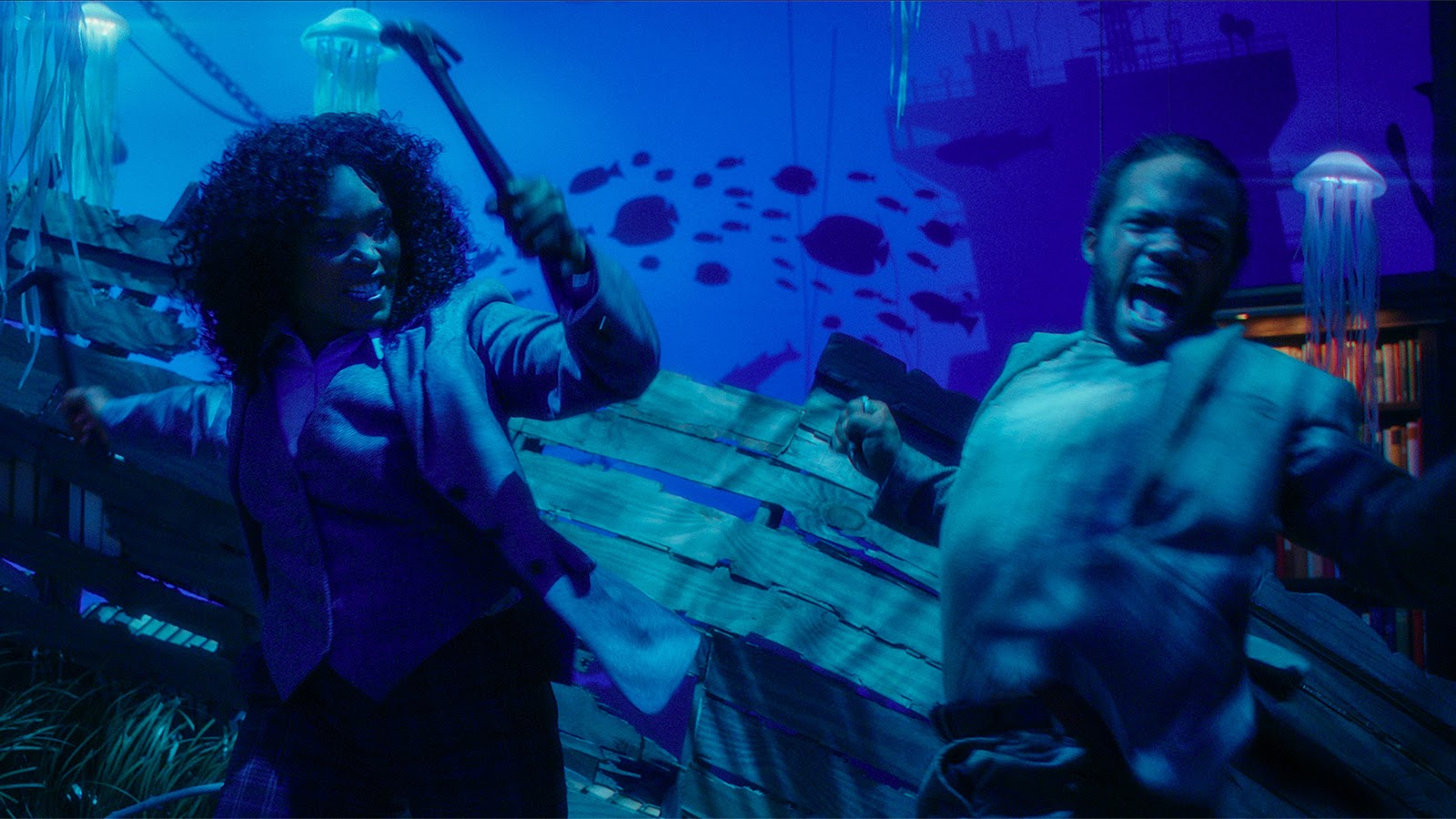
We were facing a few different things: How to stage the fights, which is later, but also the geography of it all. There’s a long windy staircase that goes down to the basement. They have to load up the truck or the van. They have to have a conversation downstairs because, if you remember, the daughter decides to stay upstairs to fight them and the mother says, “You’re on your own. Good luck.” Then they go down and they have a conversation. The sisterhood, so to speak, or former associates are now reunited for the first time in years. I have to battle it out and decide who was staying, who’s going.
Meanwhile, the bad guys are in the truck and they’re coming. So, it became a balancing act and it was a very subjective thing because we found that if we stayed with one too long, then basically people’s willing suspension of disbelief declined. At some point, it’s a tipping scale. It’s a balancing act, but you have to decide how long you can stay in one scene. As long as possible ideally to keep it interesting, but when you come back people say, “Wait, they haven’t moved since then. Why are they just standing there waiting for this line to be over?” So, it’s a fine act between the two of engaging the audience and keeping them interested and believing that this time-bending is plausible.
It’s a balancing act, but you have to decide how long you can stay in one scene.
There is a stylized approach to that as well where you can get away with it. We can say, “This is concurrent action.” Then sound comes into play. If there’s sound happening that you tie in the upstairs with the downstairs, but then again that was a problem because we had to give a distance because one of the bad guys went downstairs. So, you have to allow time.
It was geographically challenging to try to put this all together in a way that made sense. There was a lot of back and forth making it all work. It was a trial and error process which took a long time to put together because, ultimately, it’s a huge set-piece. From the minute they arrive in the library and the minute they exit the library in the van, it’s about 20 or 25 minutes. There’s so much going on, so many conversations, and so many character-dependent moments that are important to the story. Placing them all was a puzzle, and it took a long time.
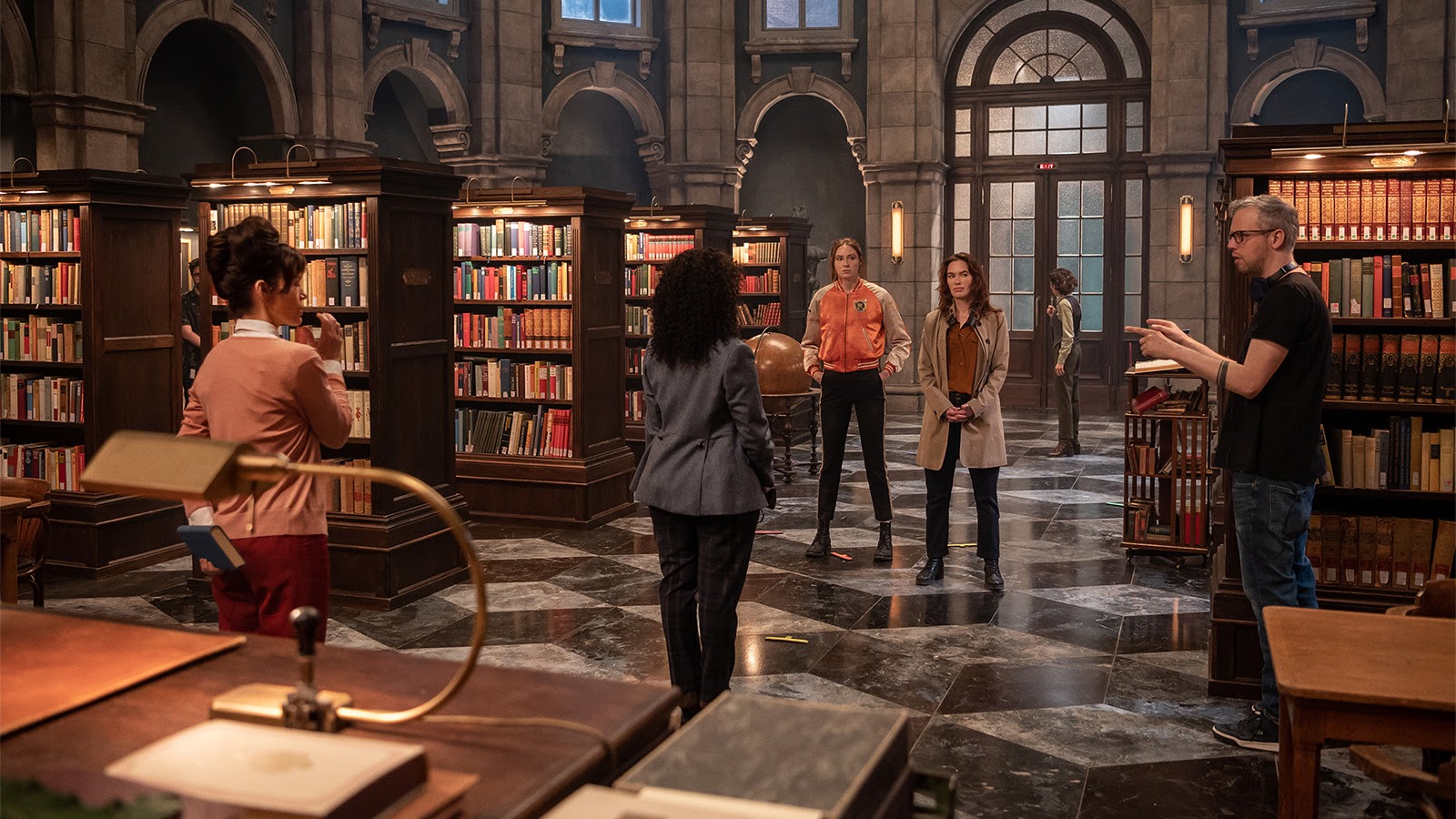
But Navot had a pretty good idea on how we wanted to do it. Ultimately, there was also a trial and error process where we played it for audiences, believing that it worked the way we wanted it to. Then, they looked at it and they said, “Nope, it doesn’t work. This is too slow. Why did they wait this long?” So, there was a process of trial and error with a lot of back and forth. It wasn’t a slam dunk from the get-go.
HULLFISH: Are you a fan of previews and what you learn from them?
DE TOTH: I think you can learn a lot. I’ve done this for a little bit. As an assistant, Neil and I had a lot of conversations about that. He’d say, “It’s preposterous having audiences tell us how to cut our movie.” There is an element of that, and it depends on where you have the preview, I believe, and what you ask is vital. Questions can be leading in a test group. “What is your least favorite scene?” is one of my least favorite questions because it elicits an answer that may not even have been a question that people have had.
It’s preposterous having audiences tell us how to cut our movie.
I think they can be very helpful in the context of clarity, the context of believability, and character development. Otherwise, especially in LA when you have previews, there’s so many people in the film industry now. There’s so many people who are either junior executives related to individuals aspiring to enter an appropriate position here. There’s so many of those that it’s hard to read their answers as a genuine answer or as an answer motivated by aspirational filmmaking goals?
We did a preview on Moll Flanders with a preview audience and the test group. We had 20 people. Sometimes you get some crazy answers. Moll Flanders is a story of a young girl’s life who’s an orphan who is an illegitimate child, and it’s her journey to go meet her mother. She was the child of a noble son and a prostitute back in the 1600s I believe. It’s based on the classic novel. So, it’s a journey, it’s a carriage ride, and they go places. Morgan Freeman speaks to this little girl and he educates her and teaches her little by little about who she is and who her mother is. She finally meets Robin Wright Penn, her mother who was a prostitute who is now come into some money because she married and had a happy life, but she’s always looked for her daughter. She meets the daughter and it’s a happy ending.
This is based on a classic novel. Moll Flanders is the title. You can’t change that. So, this individual in the test group said, “Morgan Freeman brings light into this young girl’s life. So there’s an opportunity here to rename this whole movie. We should call it ‘Dark Man of Light’ because you see, he brings life into this young girl’s life.” So, you get some of that sometimes in an audience. Obviously, you discard or you file it in the appropriate place. But previews can be helpful.
HULLFISH: What about actually going to the screeners? That’s where I find value is just being in the audience where you can sense people around you shifting in their chairs, getting bored, or laughing at weird places.
DE TOTH: Absolutely. It’s interesting because there’s often a conversation that takes place with executives after saying, “Was this a good laugh, or was this a bad laugh?” There’s a huge amount of trepidation sometimes from some filmmakers and some executives who will zero in on the laughing.
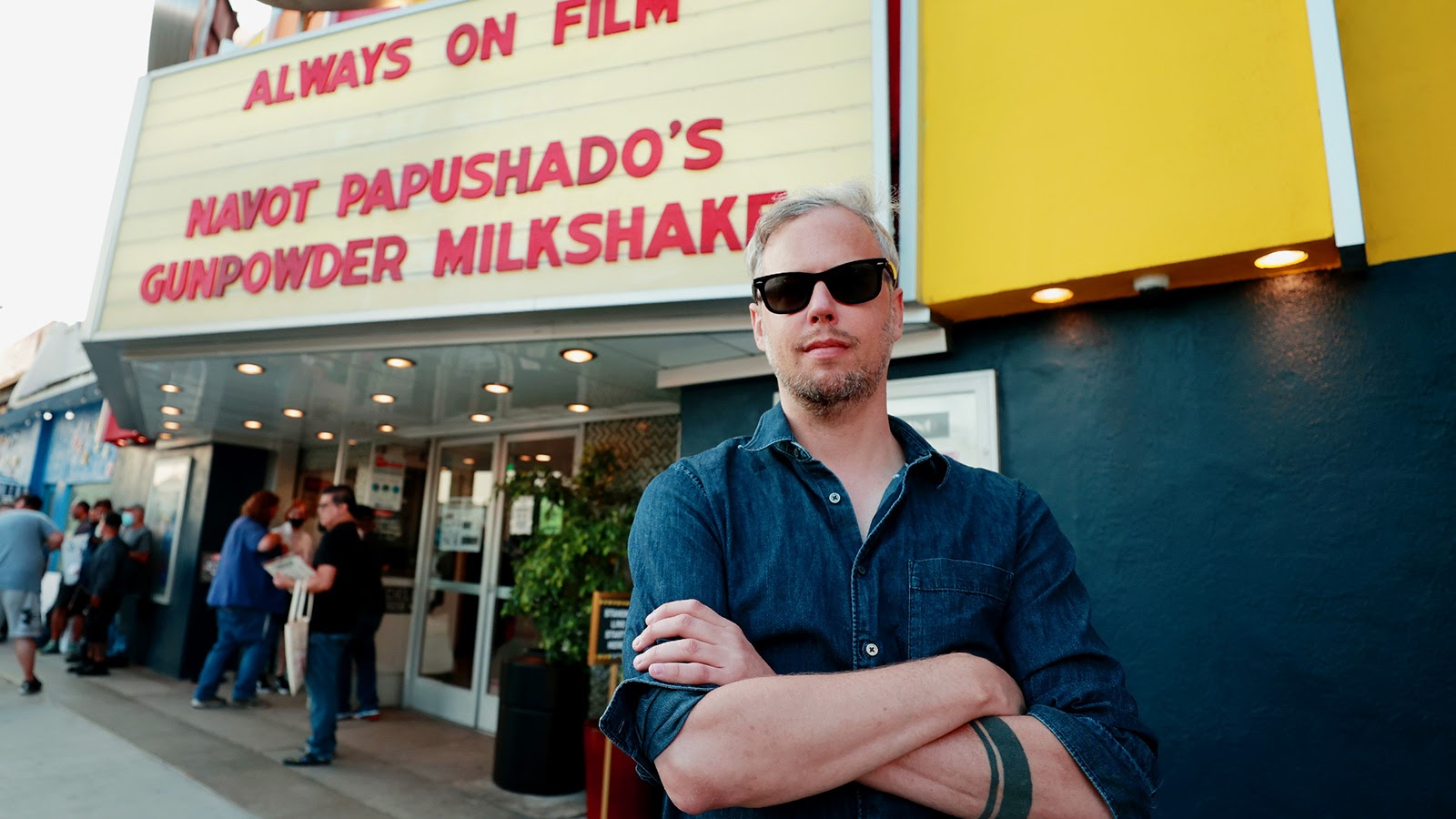
One example was when we worked on The Sum of All Fears which is also a Morgan Freeman film and stars Ben Affleck. It’s directed by Phil Robinson, a fantastic director who directed Field of Dreams, and it’s about a terrorist attack intended to kill the president in Baltimore during an exhibition pro football game. This dirty weapon blows up and kills about 500,000 people. Half of Baltimore is devastated. We were mixing for the preview on the weekend of September 11th. So, obviously Paramount Studios said, “We have to stop everything. We need to put it away. We’ll reconvene.”
We put everybody on hold and I think two or three months go by. We do some tweaking in the cutting room meanwhile and nobody knows what they’re going to do. We end up going to a preview. The movie’s an excellent movie, by the way. I don’t know if you’ve seen the movie, but it’s fantastic. It’s just a tense, great movie about international intrigue and tracking the bomb. Ultimately, it’s about finding out who made it and why and it’s very pertinent even today.
So, we have the preview and at the end of the movie you could hear a pin drop. Complete silence. The executives pull us in and say, “Guys, obviously, this is too early. This is too close to the bone. We can’t release the movie.” While we’re having this conversation, the test result scores come back in, and we had scored an 87. People loved it. They absolutely loved it. The movie itself was so thought-provoking that instead of eliciting applause, I think out of respect for the timeliness of it all and maybe just introspection, people were still processing the movie when the lights came on, which is unusual.
So, to your point, sometimes you can read the audience, but sometimes…
HULLFISH: Sometimes you can’t.
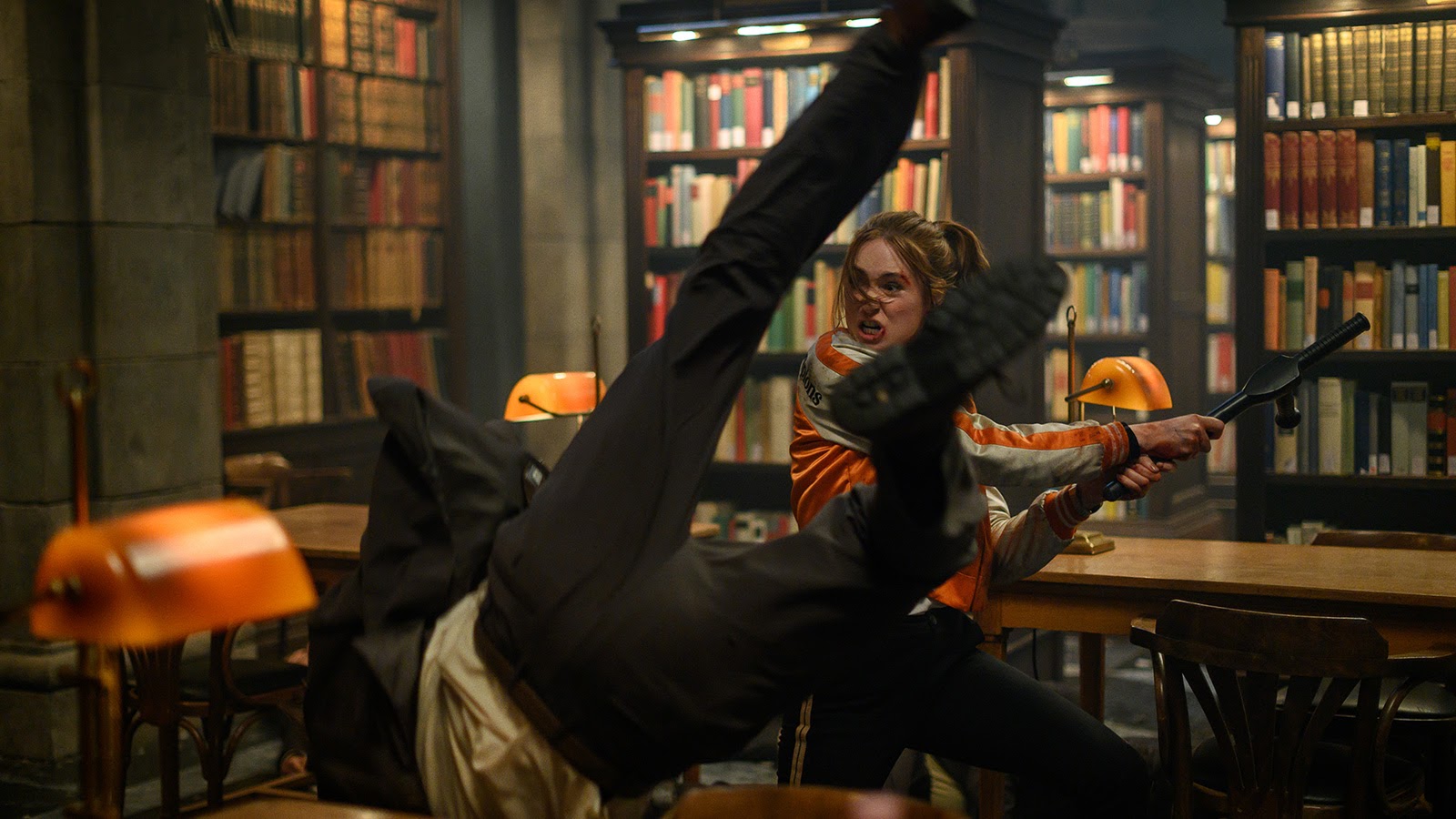
DE TOTH: It went from, “Guys, sometimes you just have to accept the timing and there’s just bad luck.” Then, the papers hit the table, we see the score 87, and it went to, “Guys, this is Academy Award time. Everybody loves the movie.” We went into a completely different mode. I think you’re right that listening to the audience generally yields some valuable information and it also settles arguments of, “Is this joke funny? Is this not? Do people love this? Do people not?”
I worked on This Means War with McG, and we were doing this paintball sequence where Tom Hardy, an undercover spy with extreme killing skills, is trying to impress Reese Witherspoon using his spy skills. He and Chris Pine are vying for Reese Witherspoon’s attention and they’re using all of their CIA spying technology to win the girl. They both think they love her. So, they eavesdrop on her conversations and Tom Hardy overhears Reese Witherspoon talking about him saying, “Yeah, he’s nice, but he’s just safe. He just feels safe,” and Tom Hardy interprets that as boring. So then he takes her to a paintball field where he proceeds to obliterate the field, some of which are 13-year-old boys, with his Jason Bourne-like skills.
So the idea was to make a very funny sequence, but McG said, “I don’t know. Is it funny? Is it not?” I said, “Let’s just wait for the audience,” and the audience loved it. They laughed throughout the whole thing. So, you can learn from a preview. I’m not adverse to it. I think it can be helpful.
What is scary is the accuracy of which people can predict the outcome of things these days. The testing and the science behind it is a little bit depressing because I like to think we’re all different, but according to them we’re not. So, I like to hope that we are and to hope that sometimes, not for bad reasons, but I like them to be wrong because it proves that maybe we are different and not as predictable as they say we are.
HULLFISH: Love it. Thank you so much for joining me and chatting about this.
DE TOTH: My pleasure.

